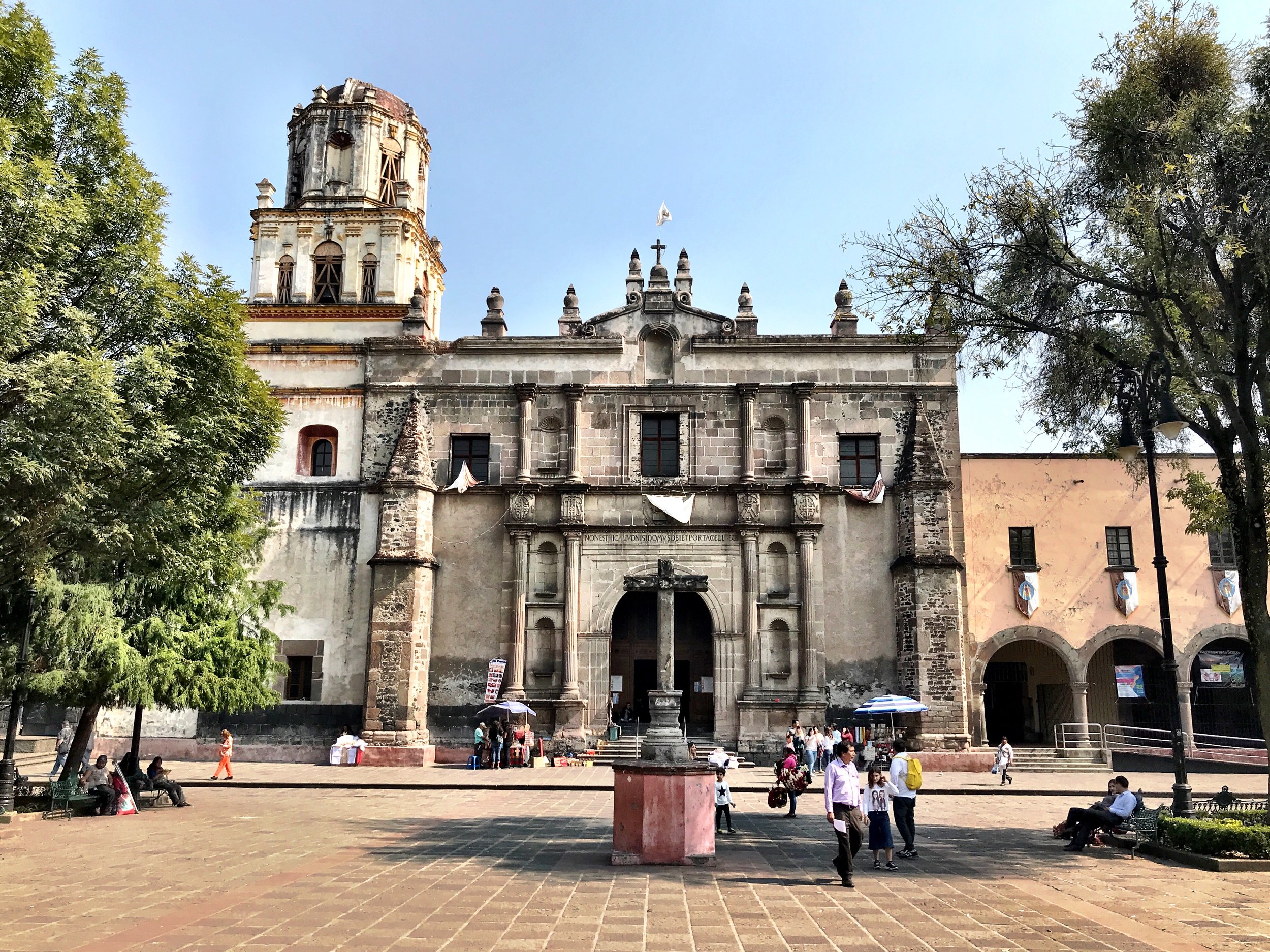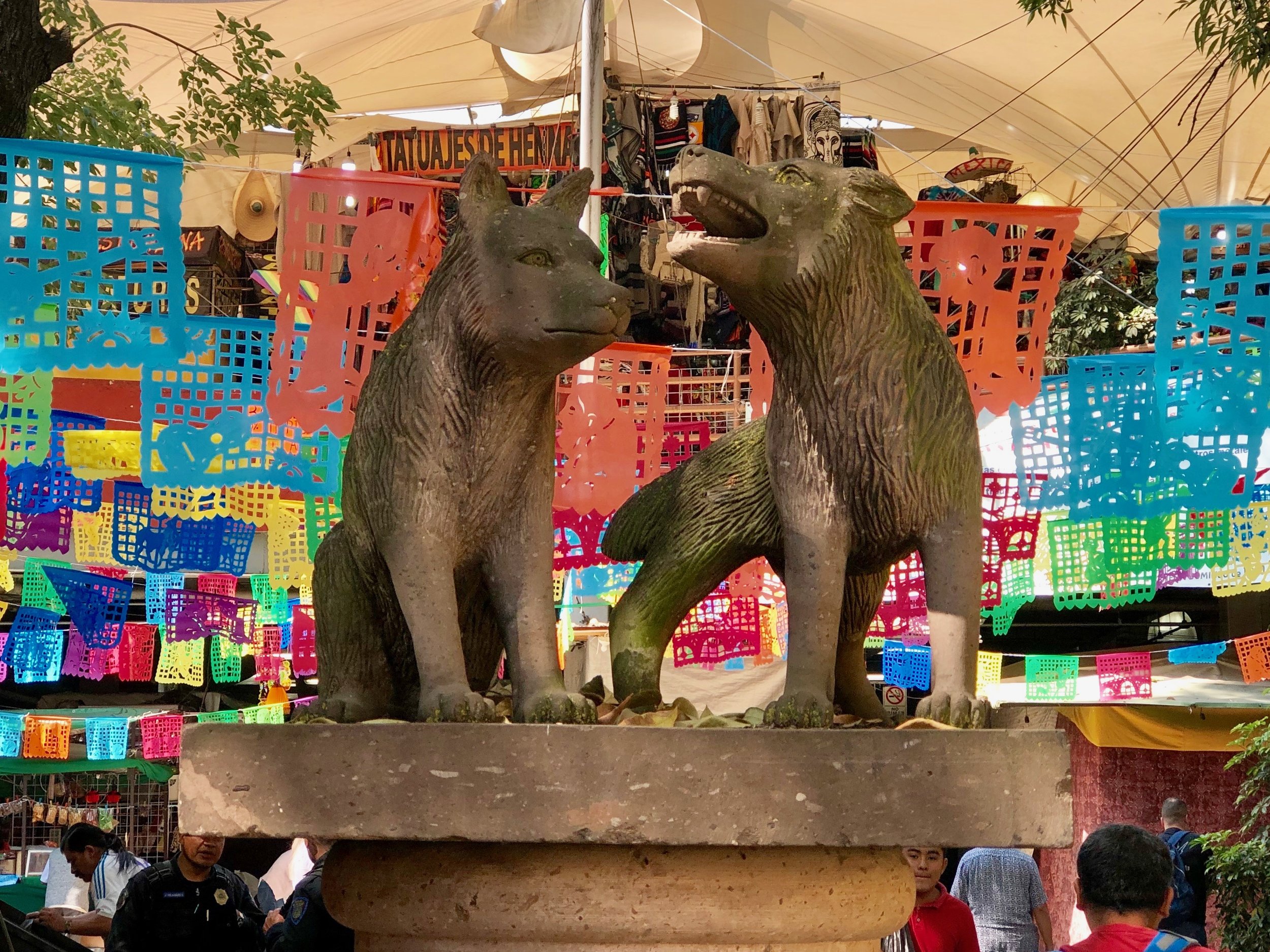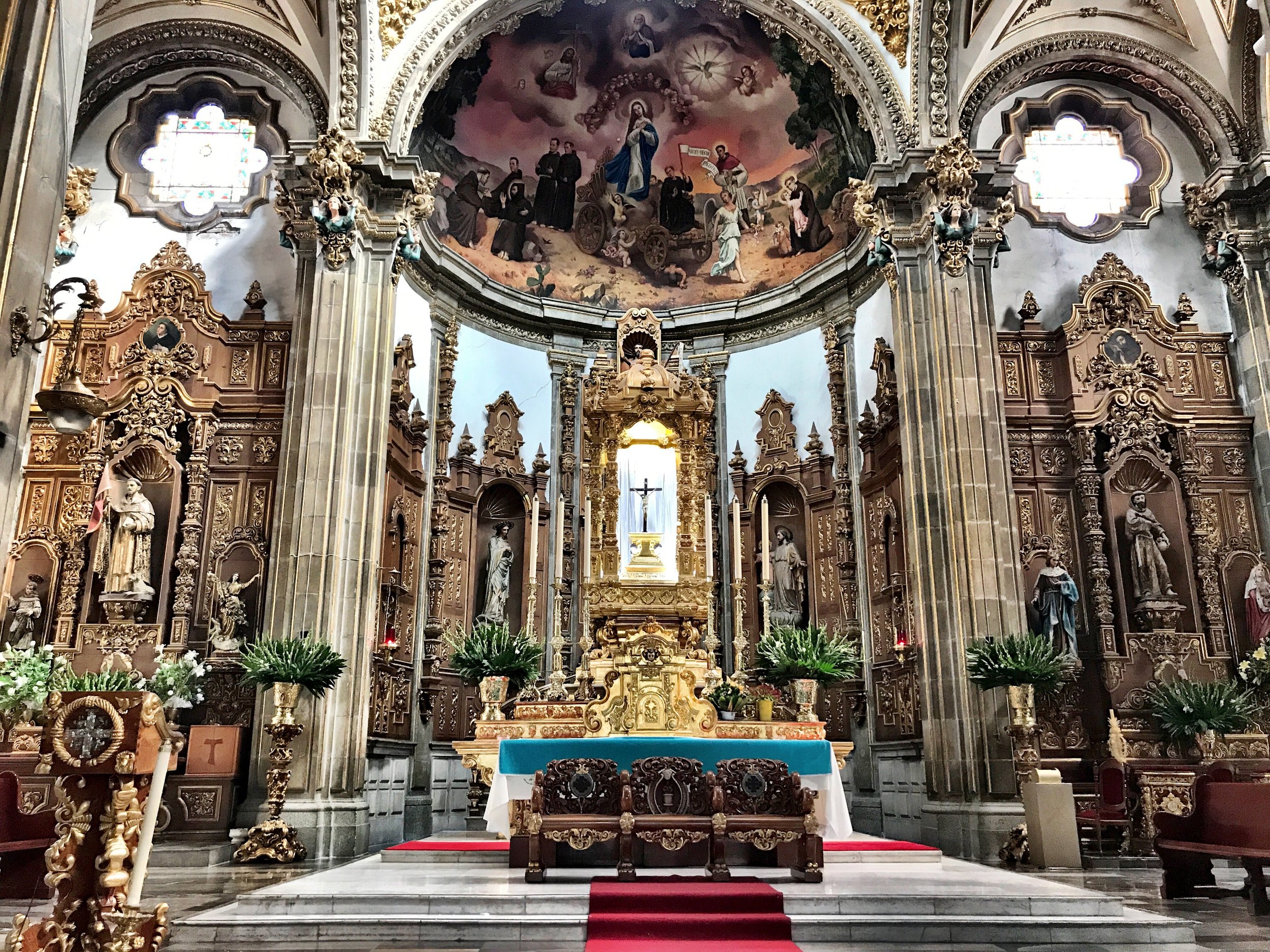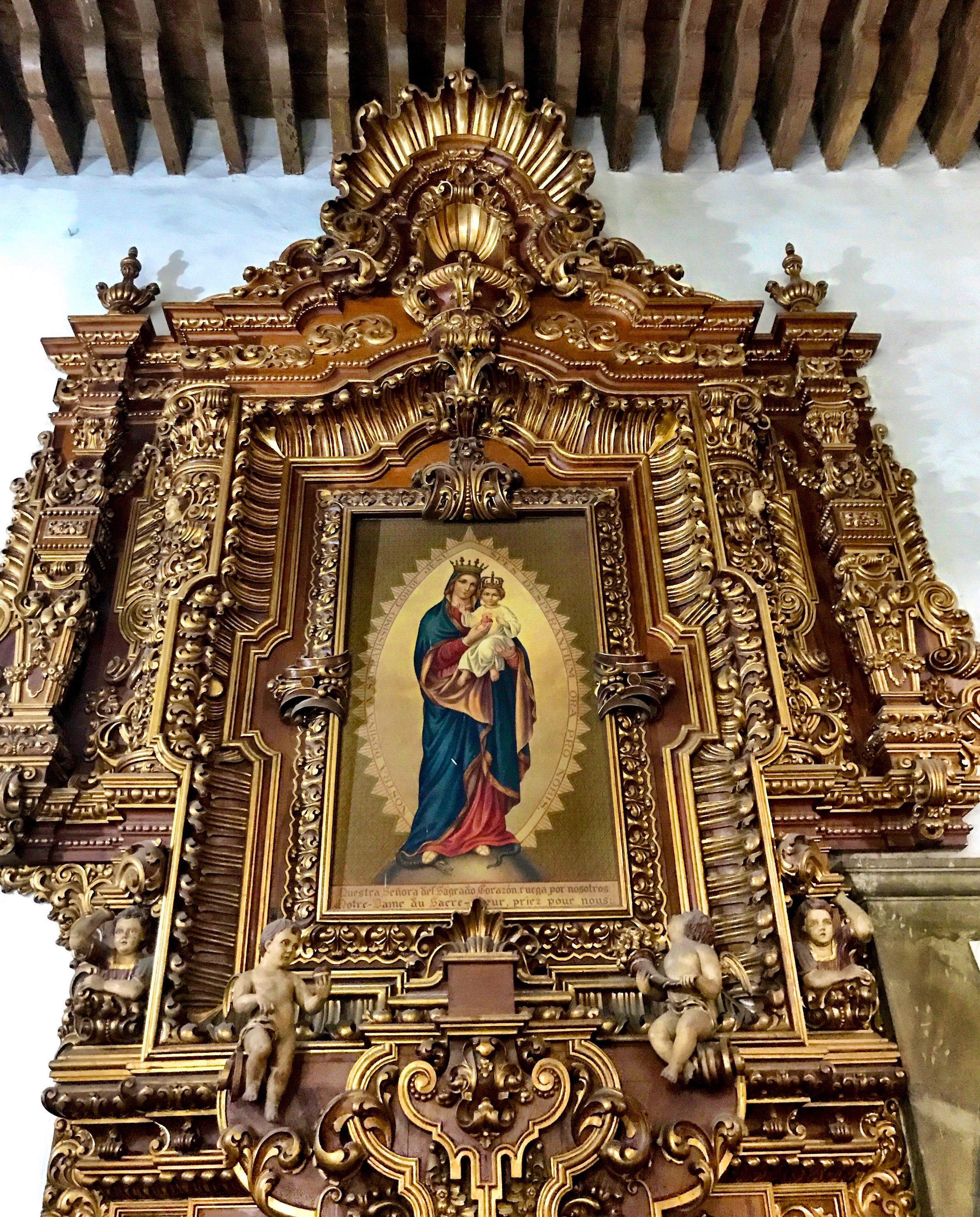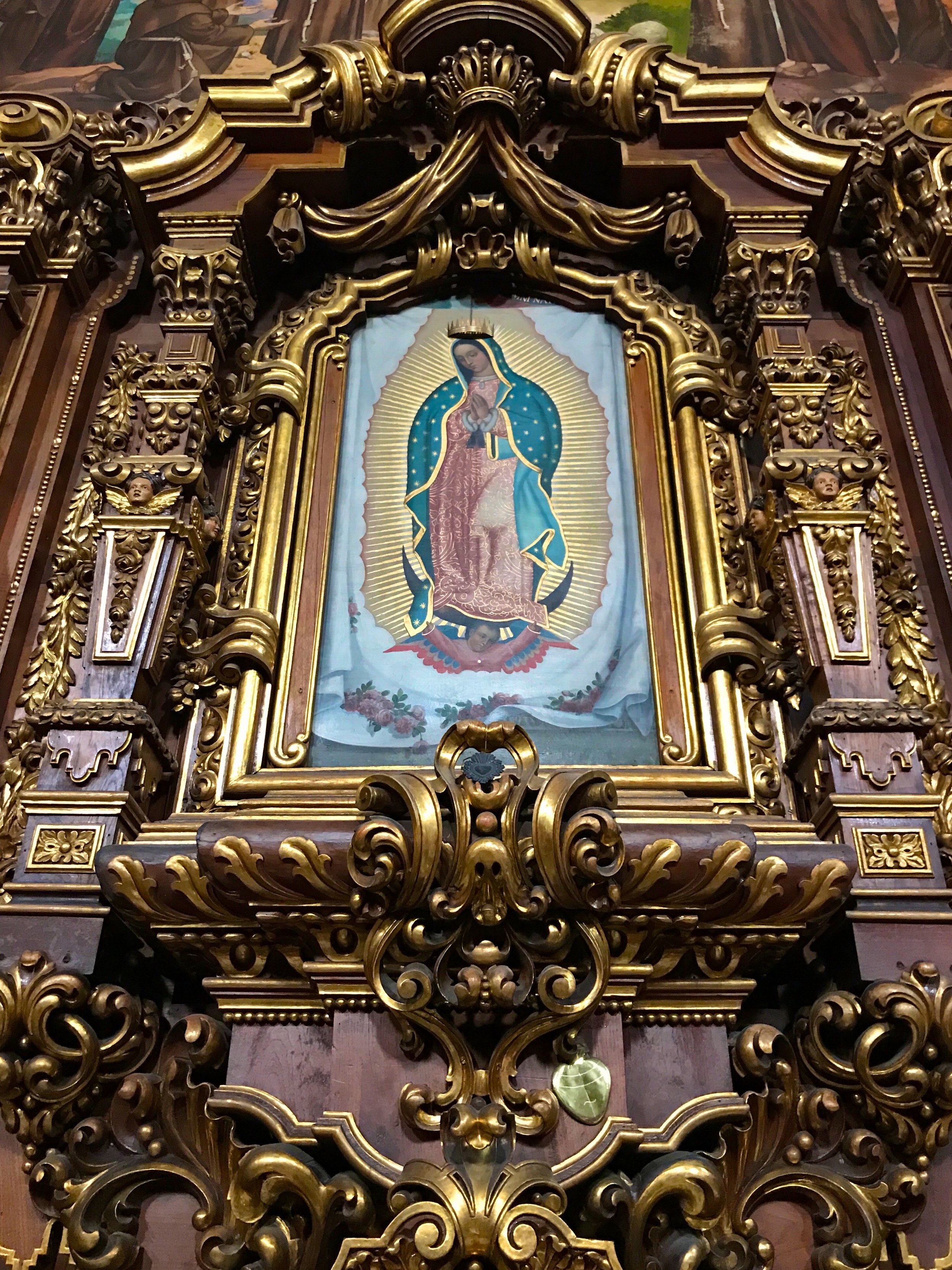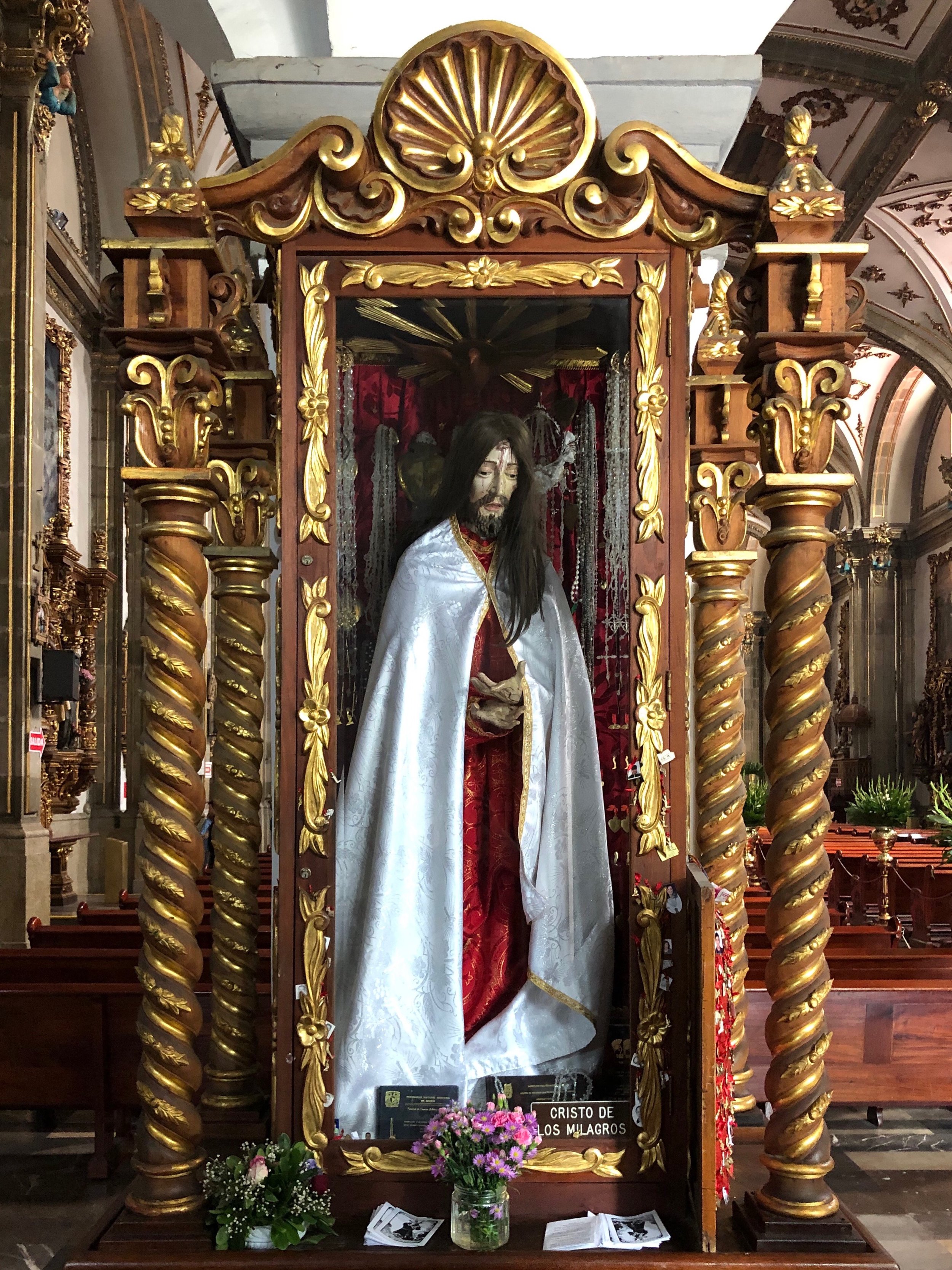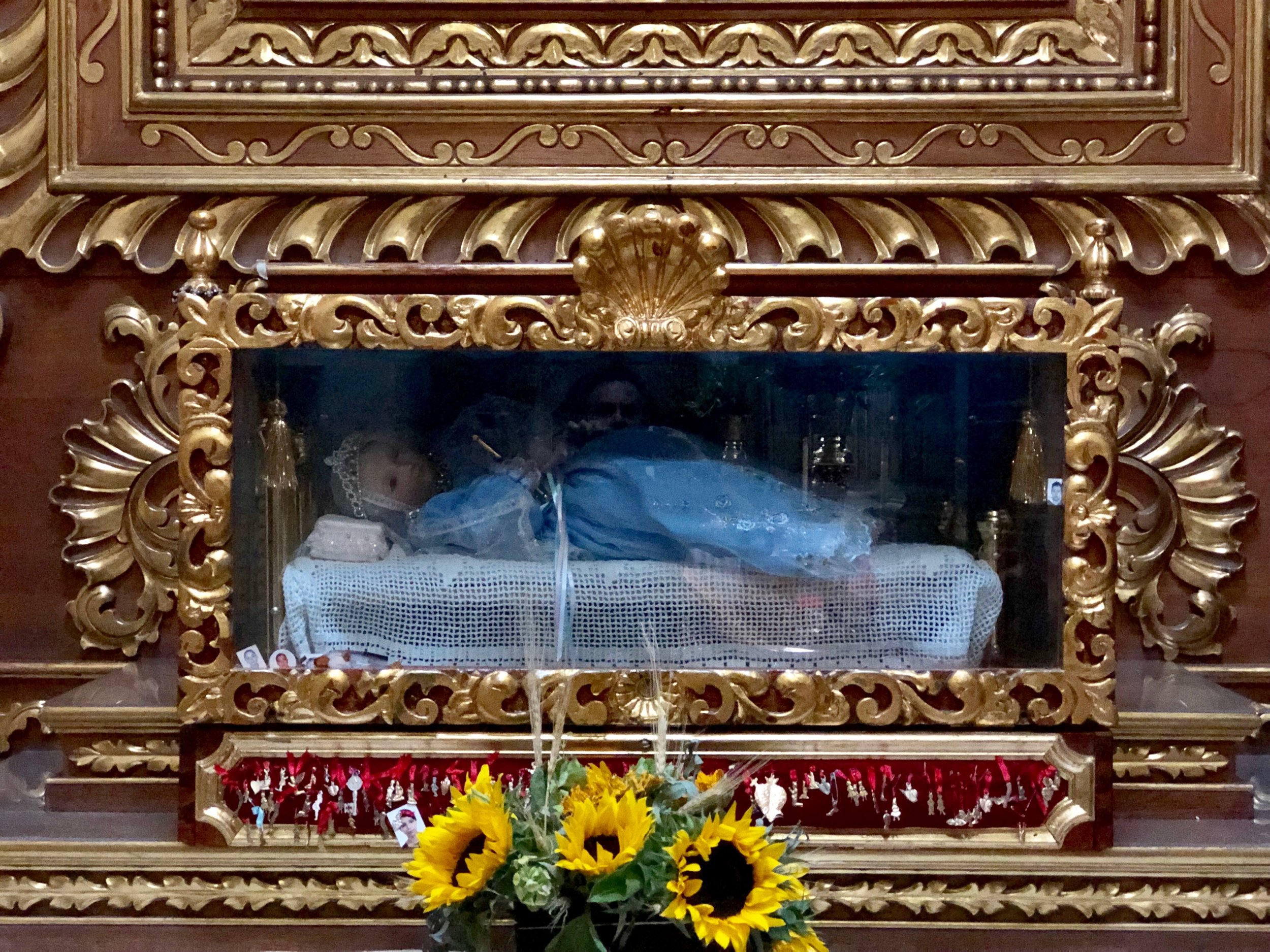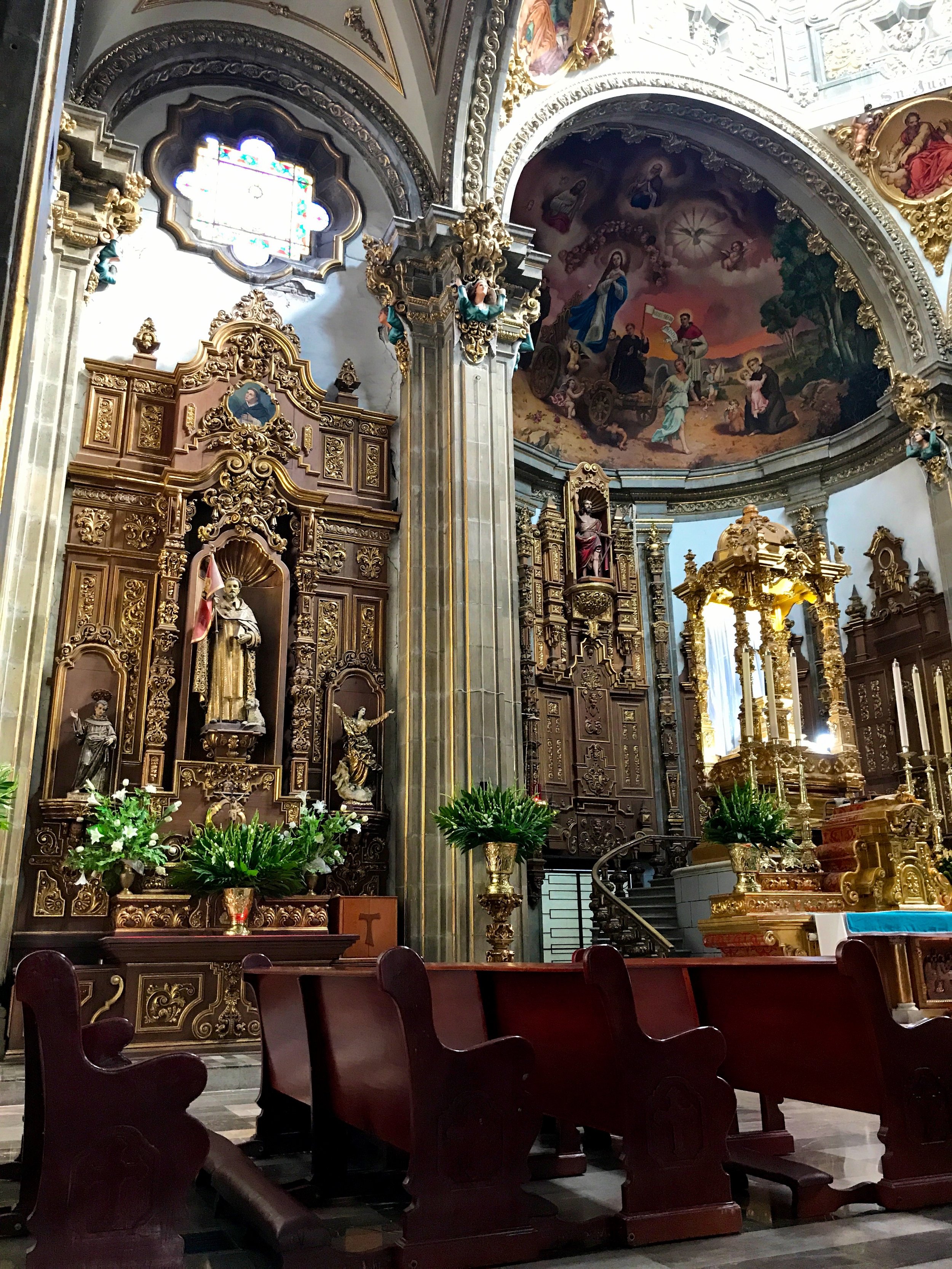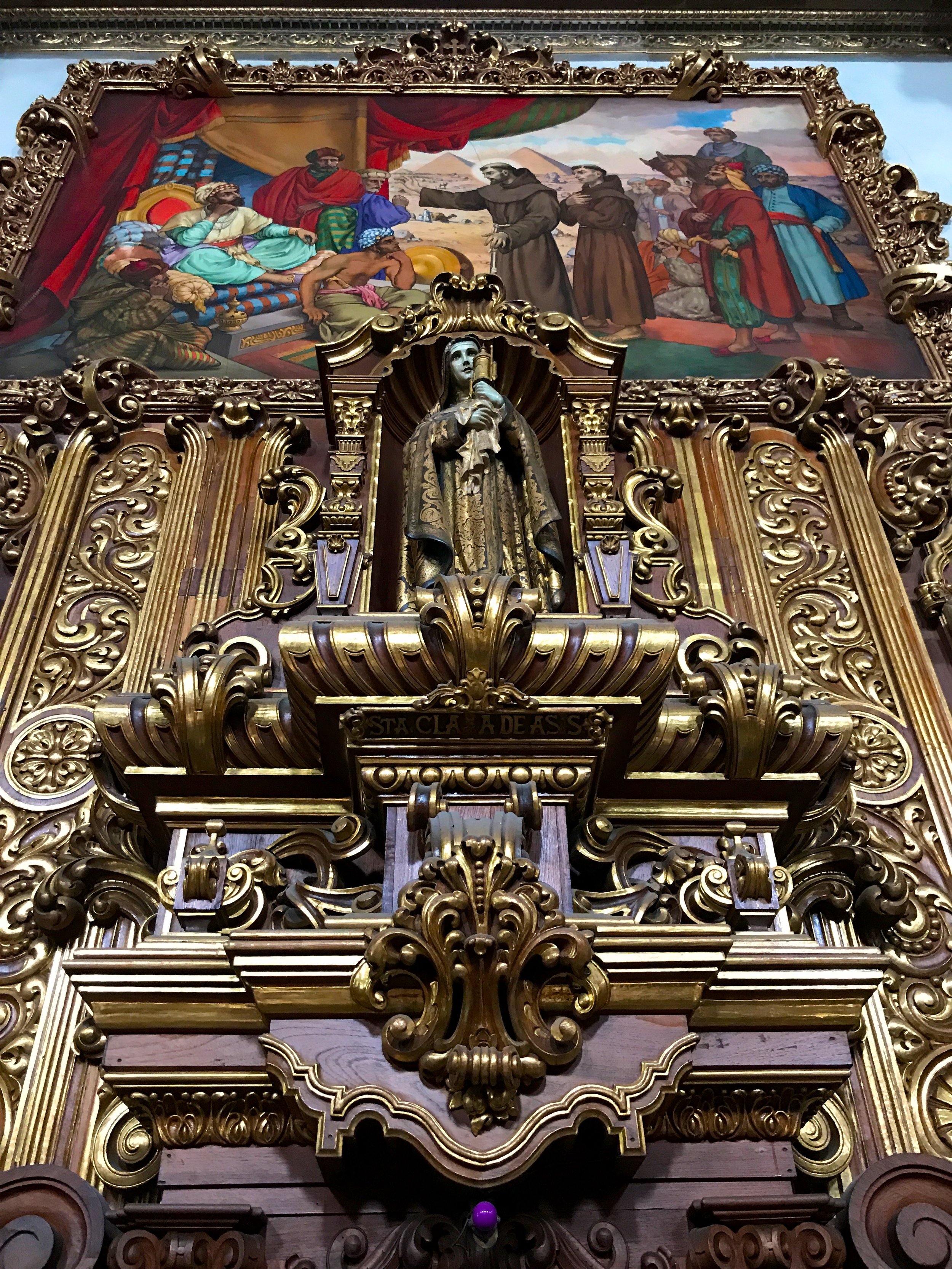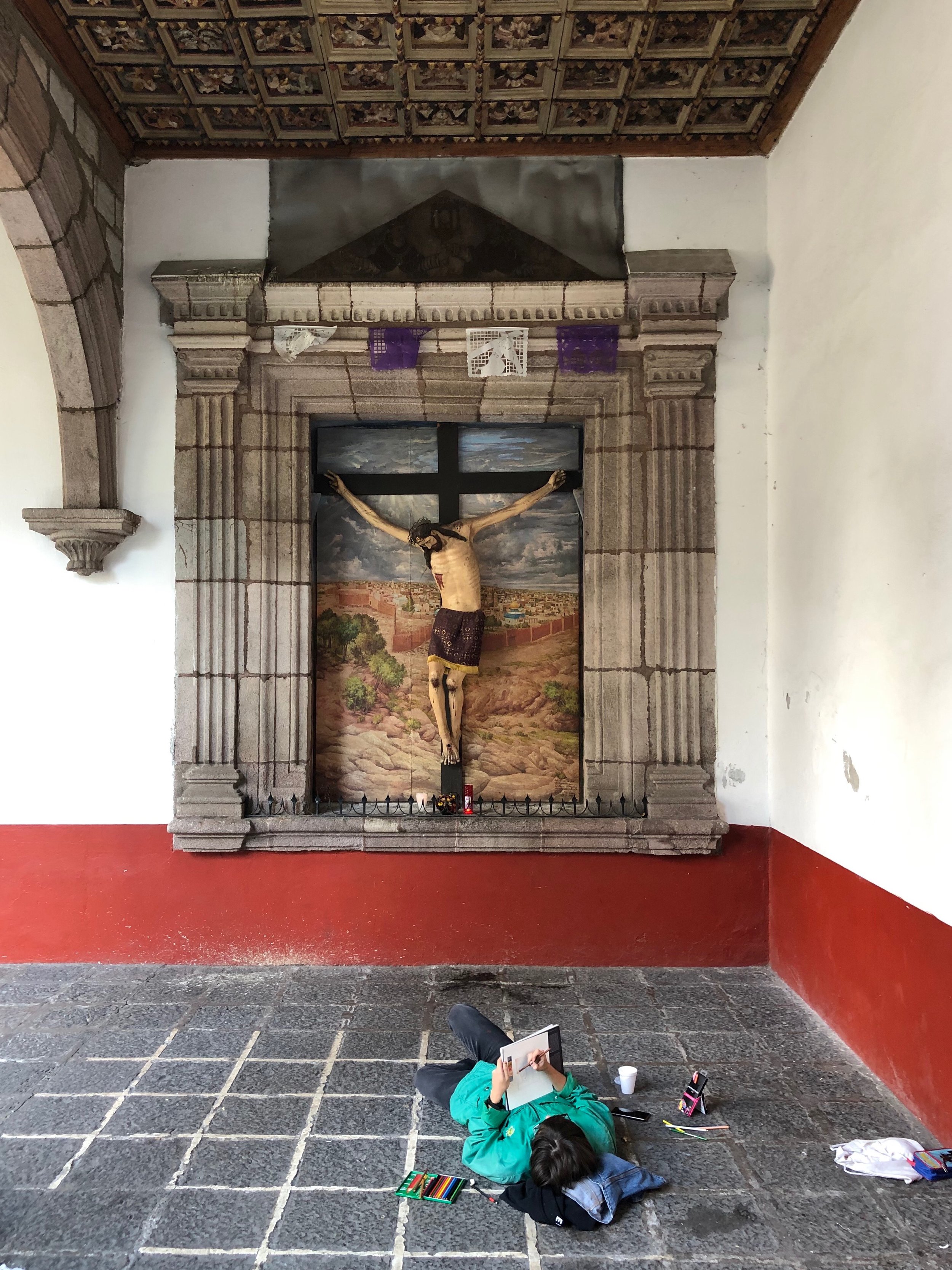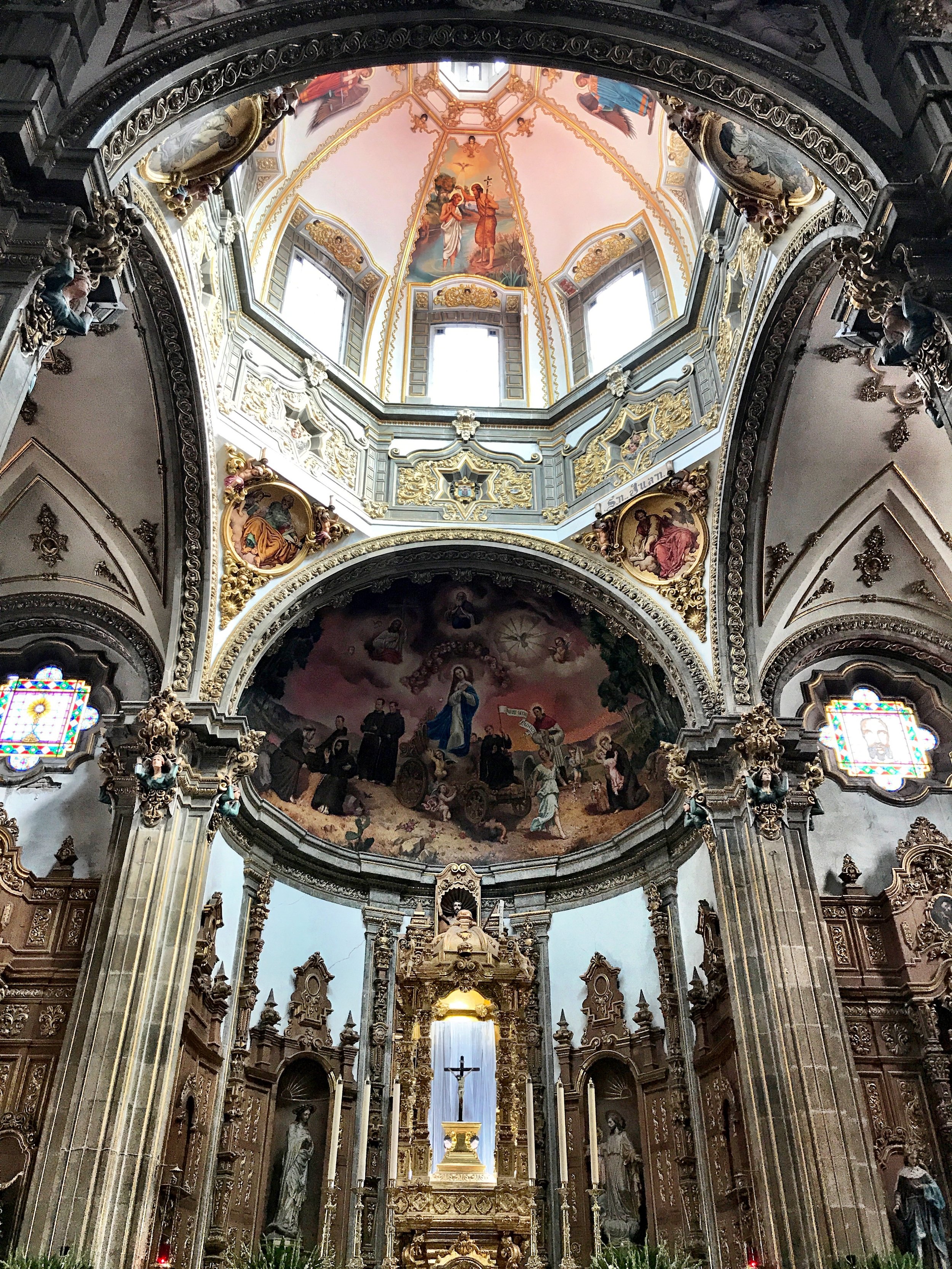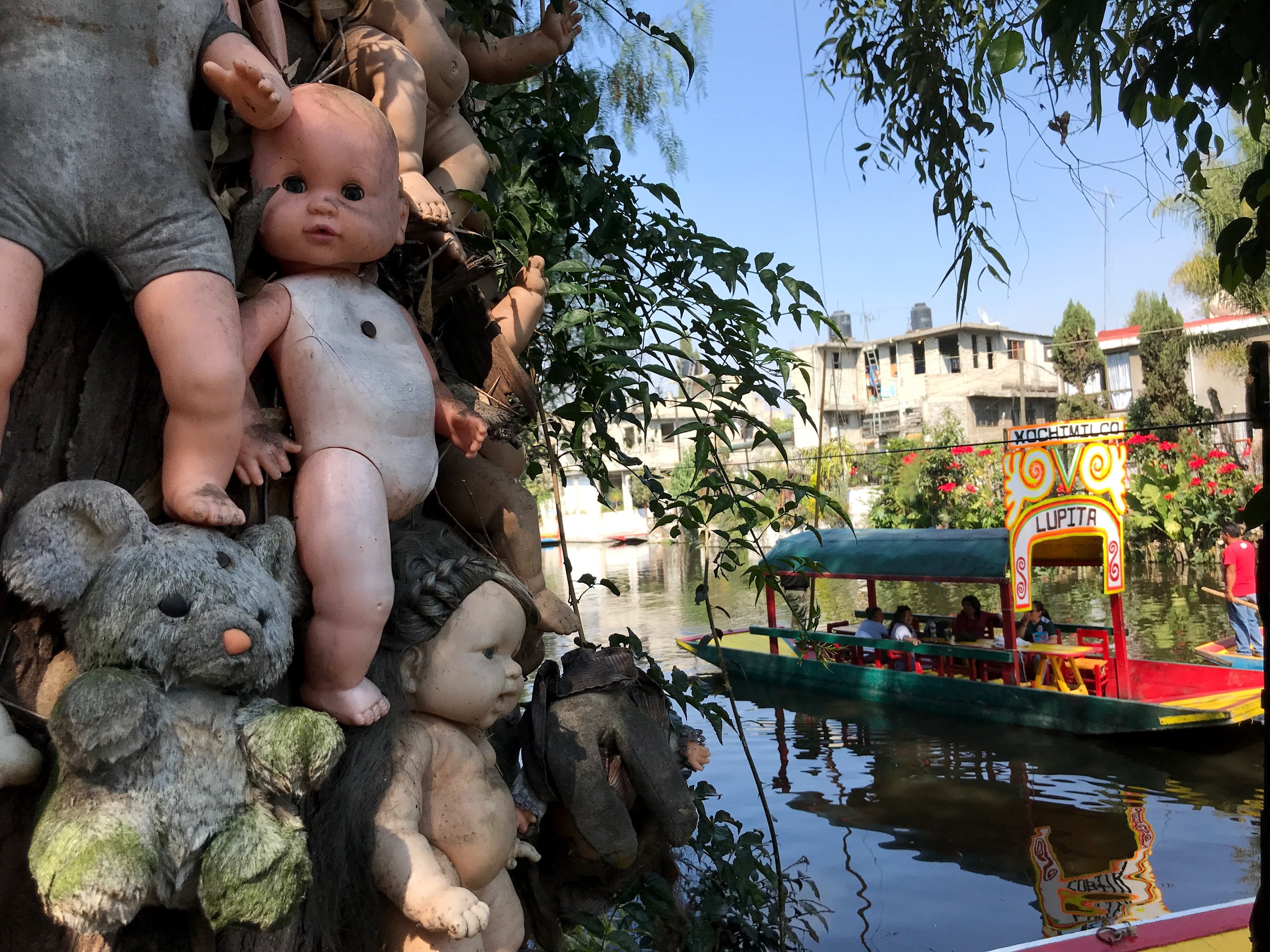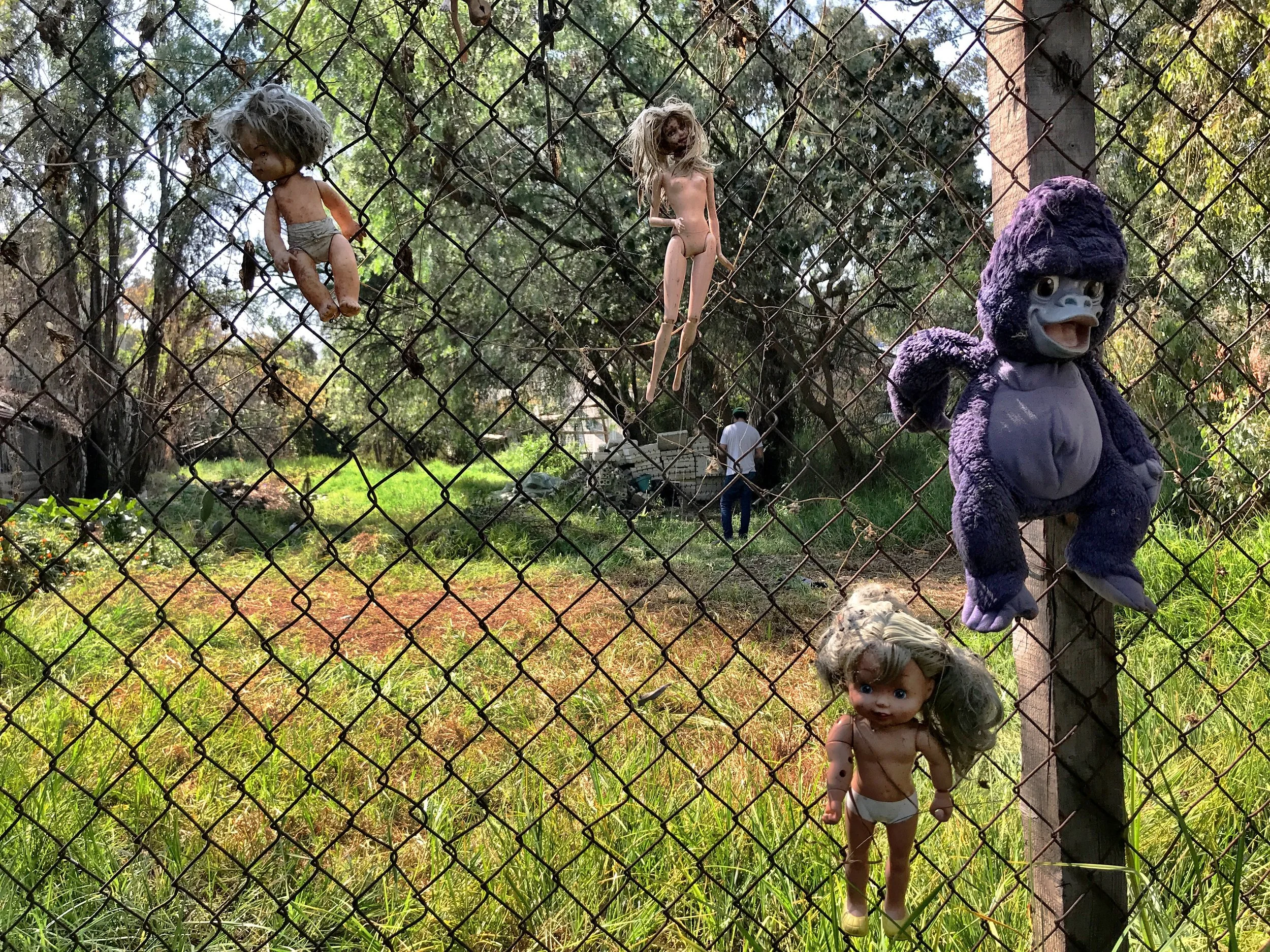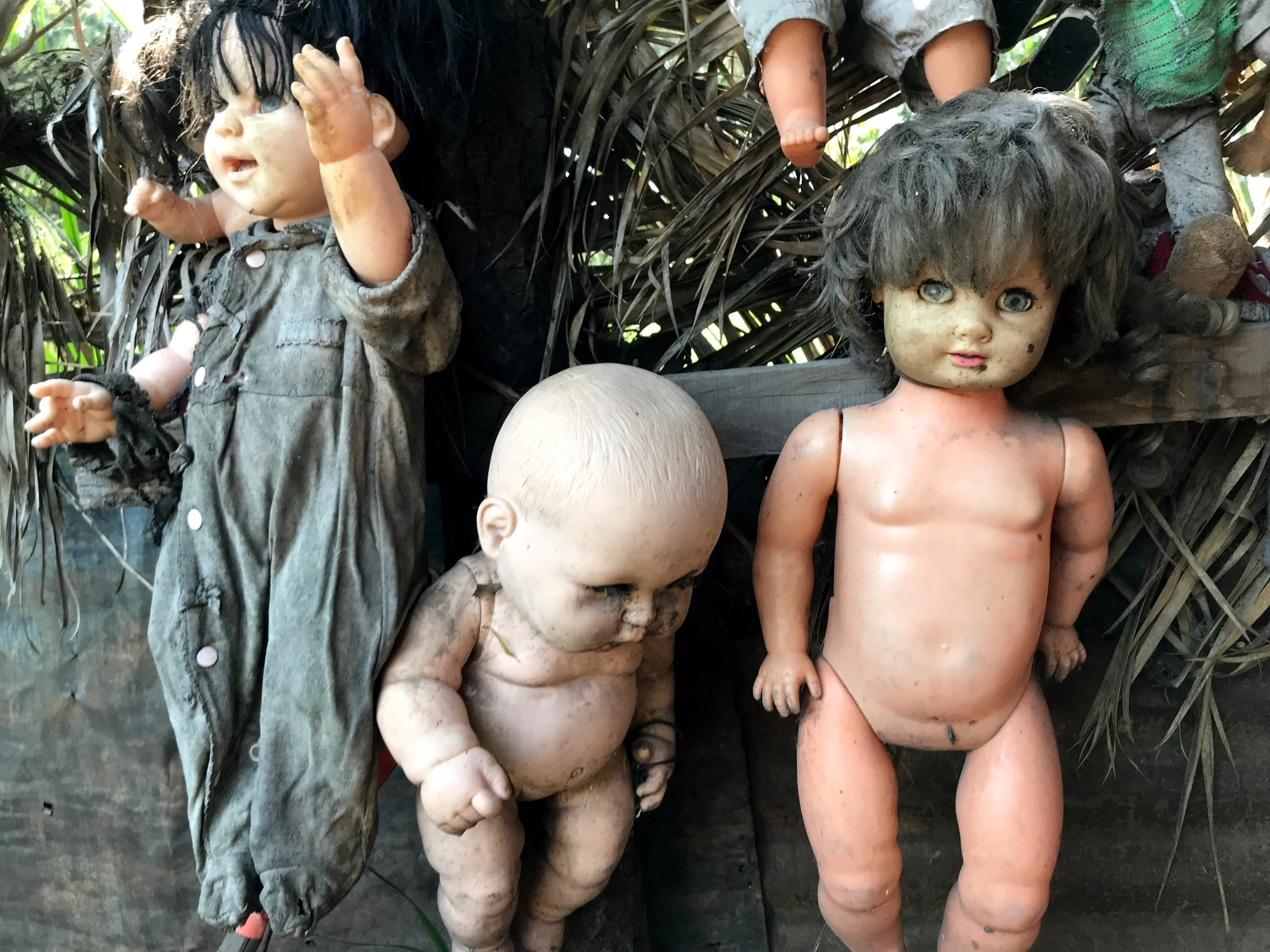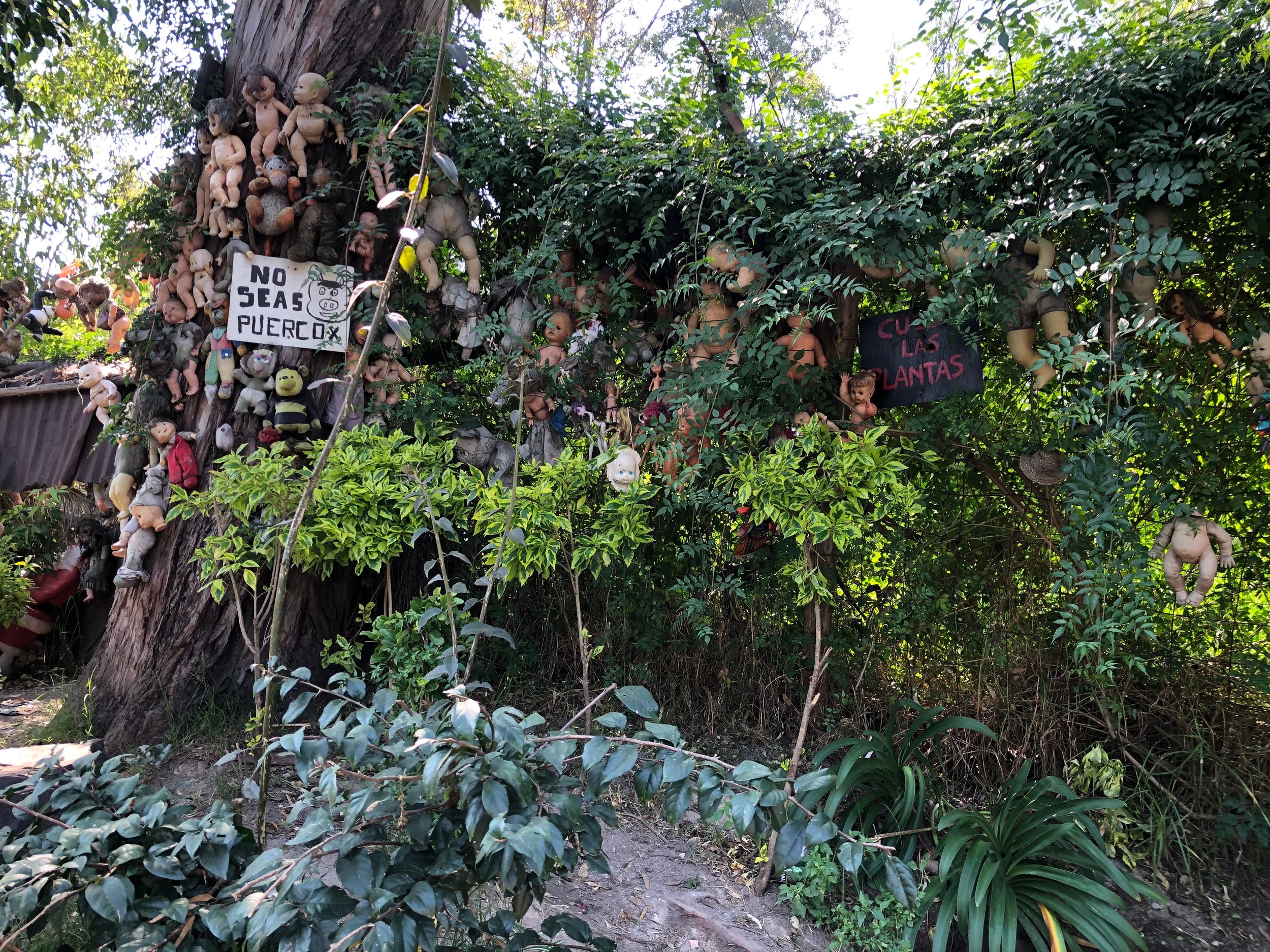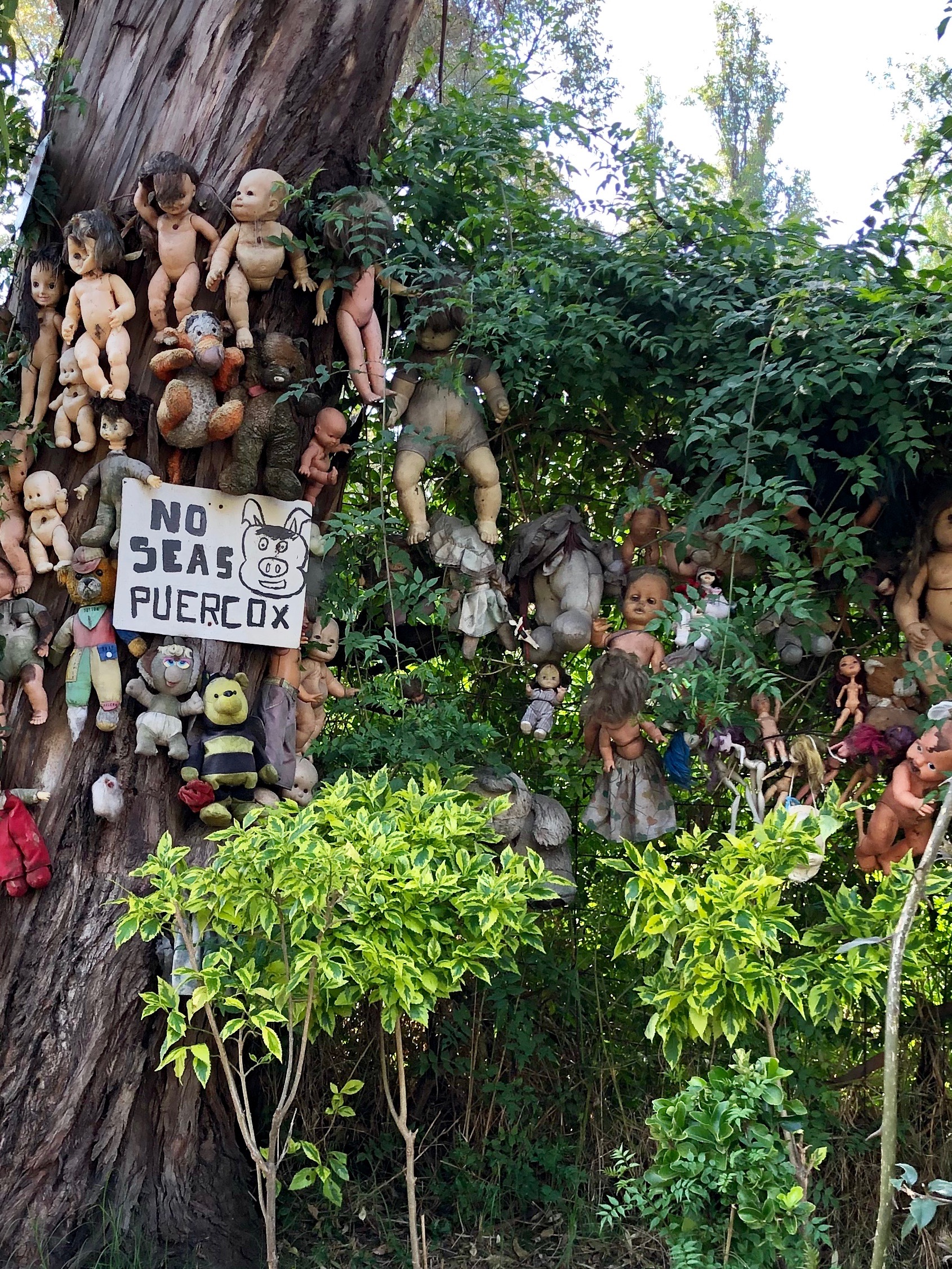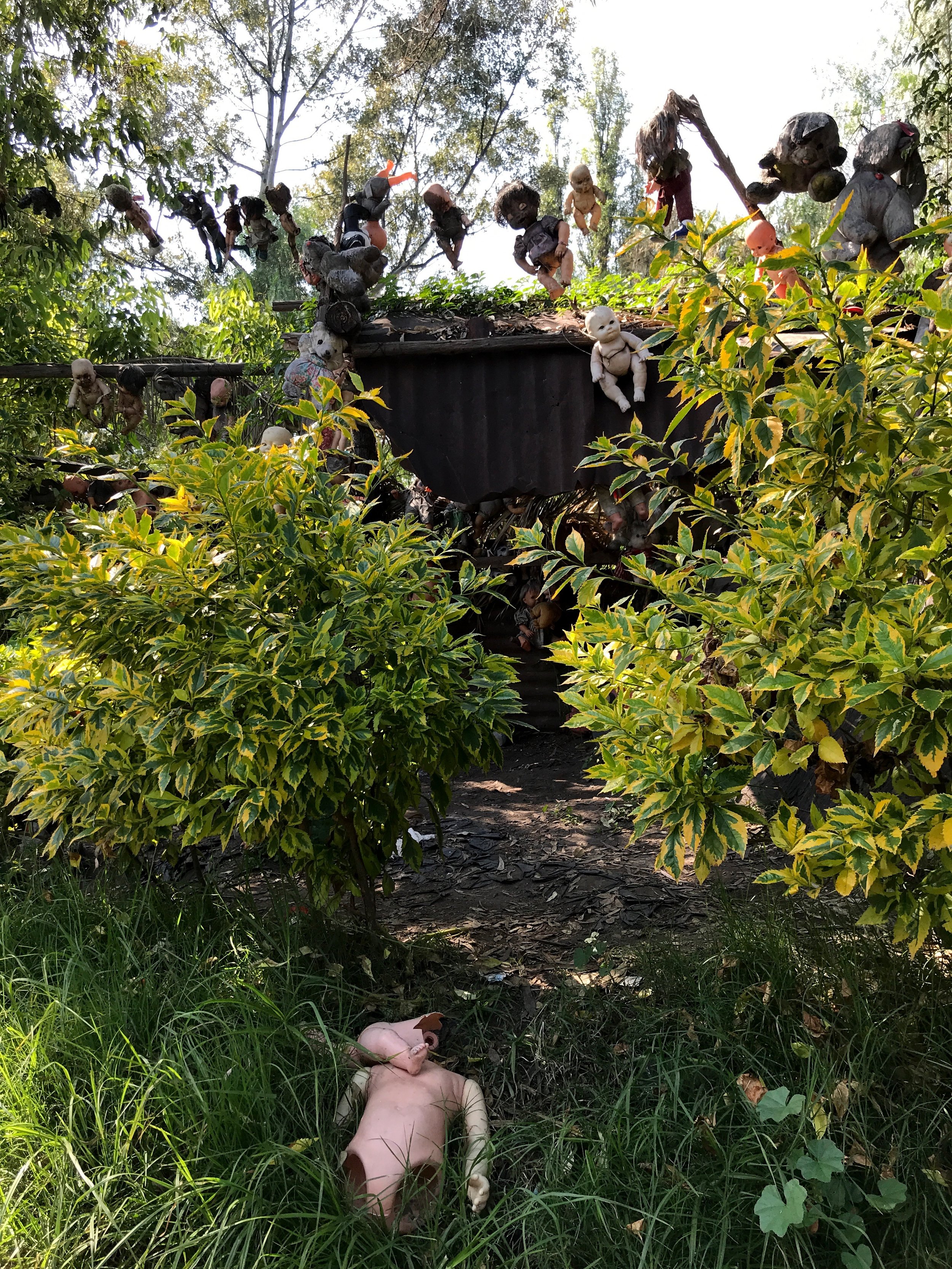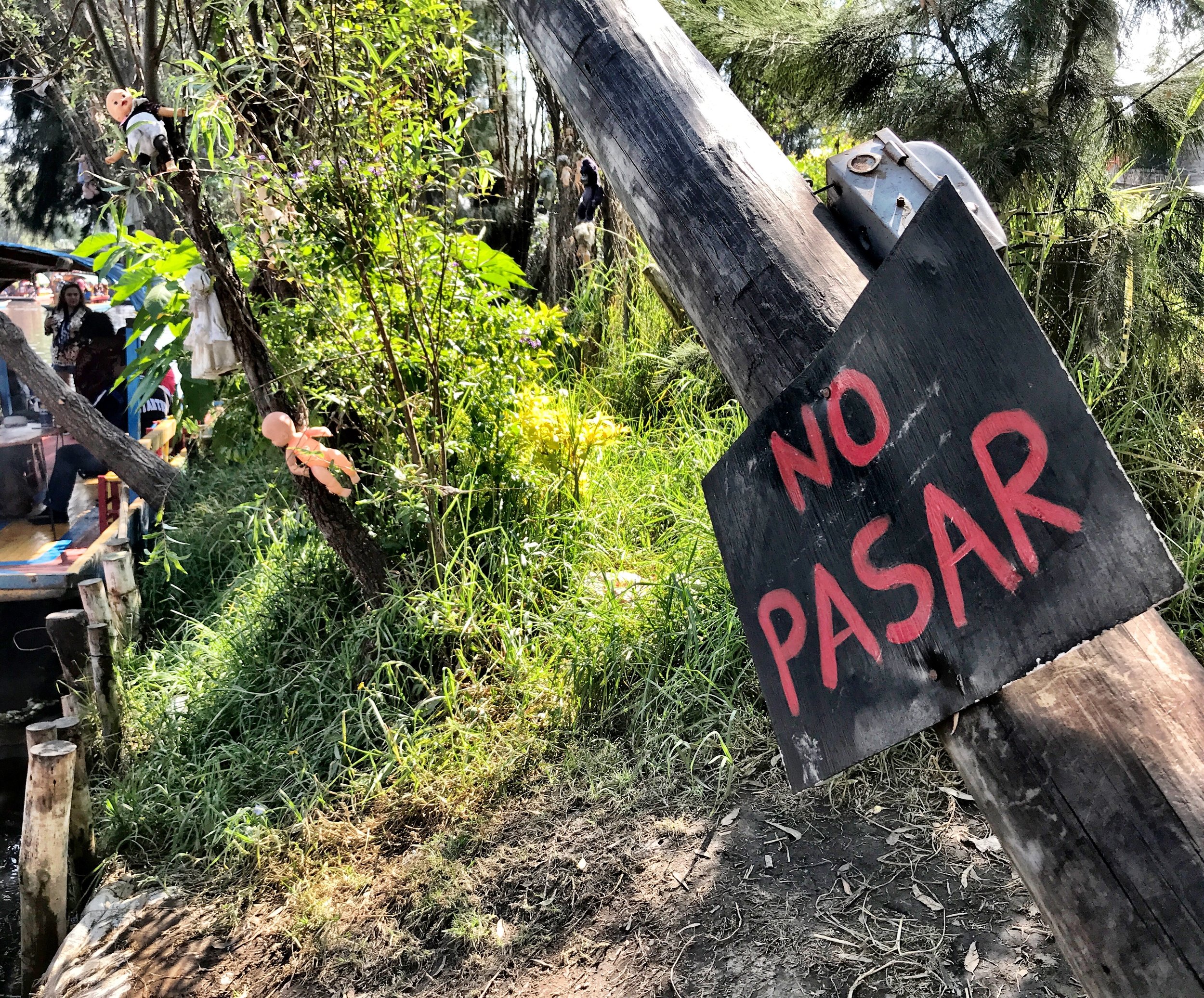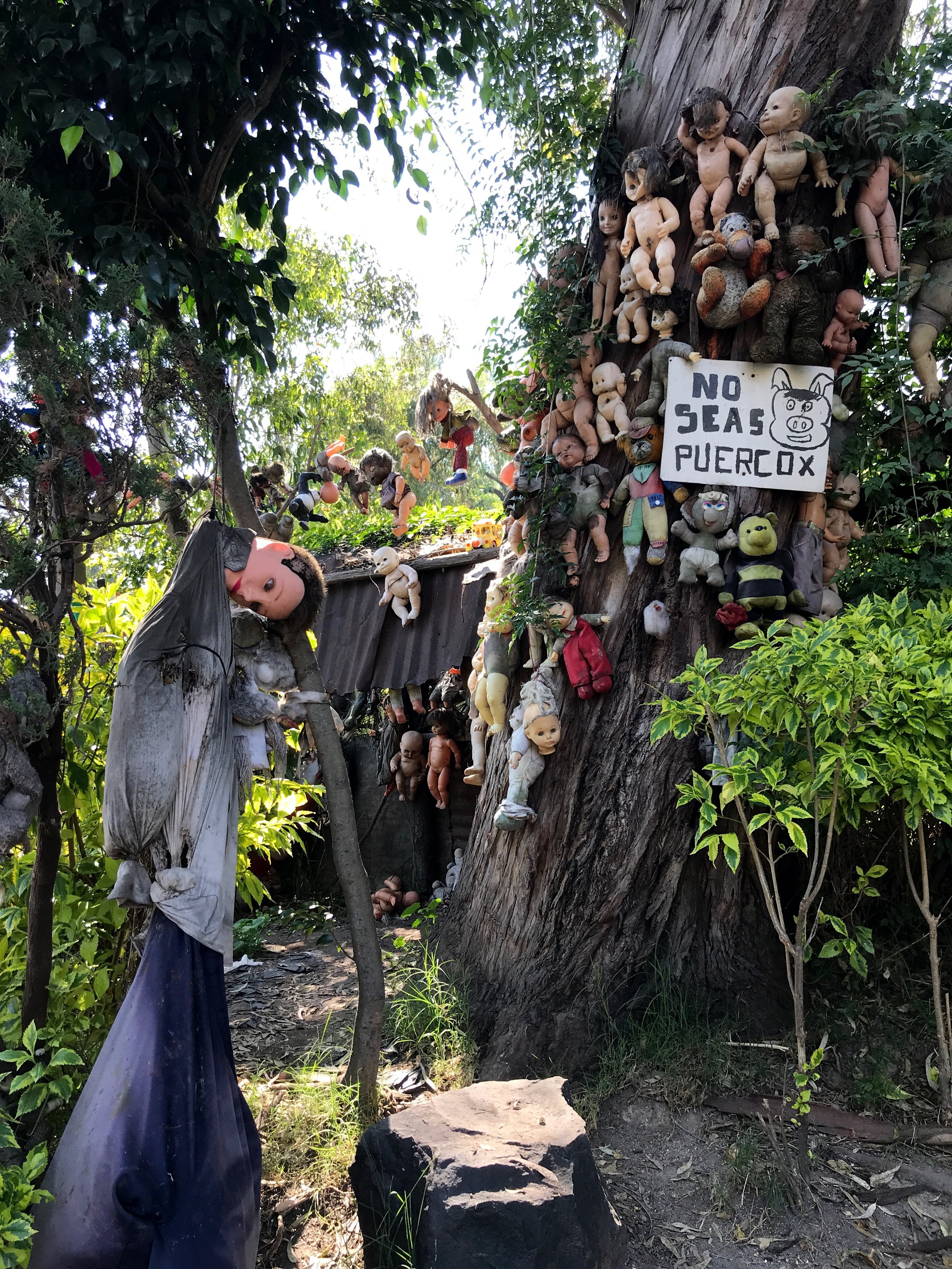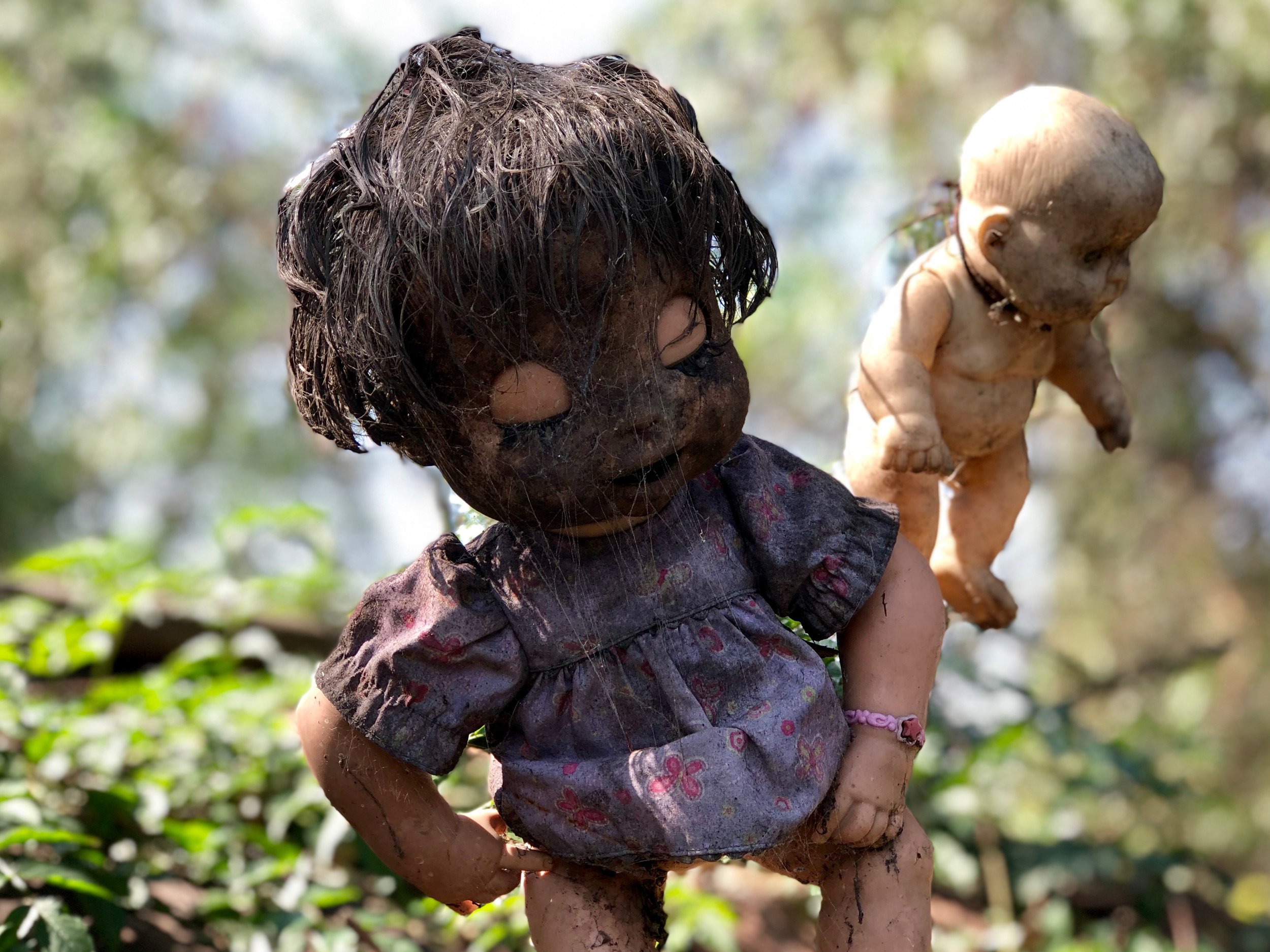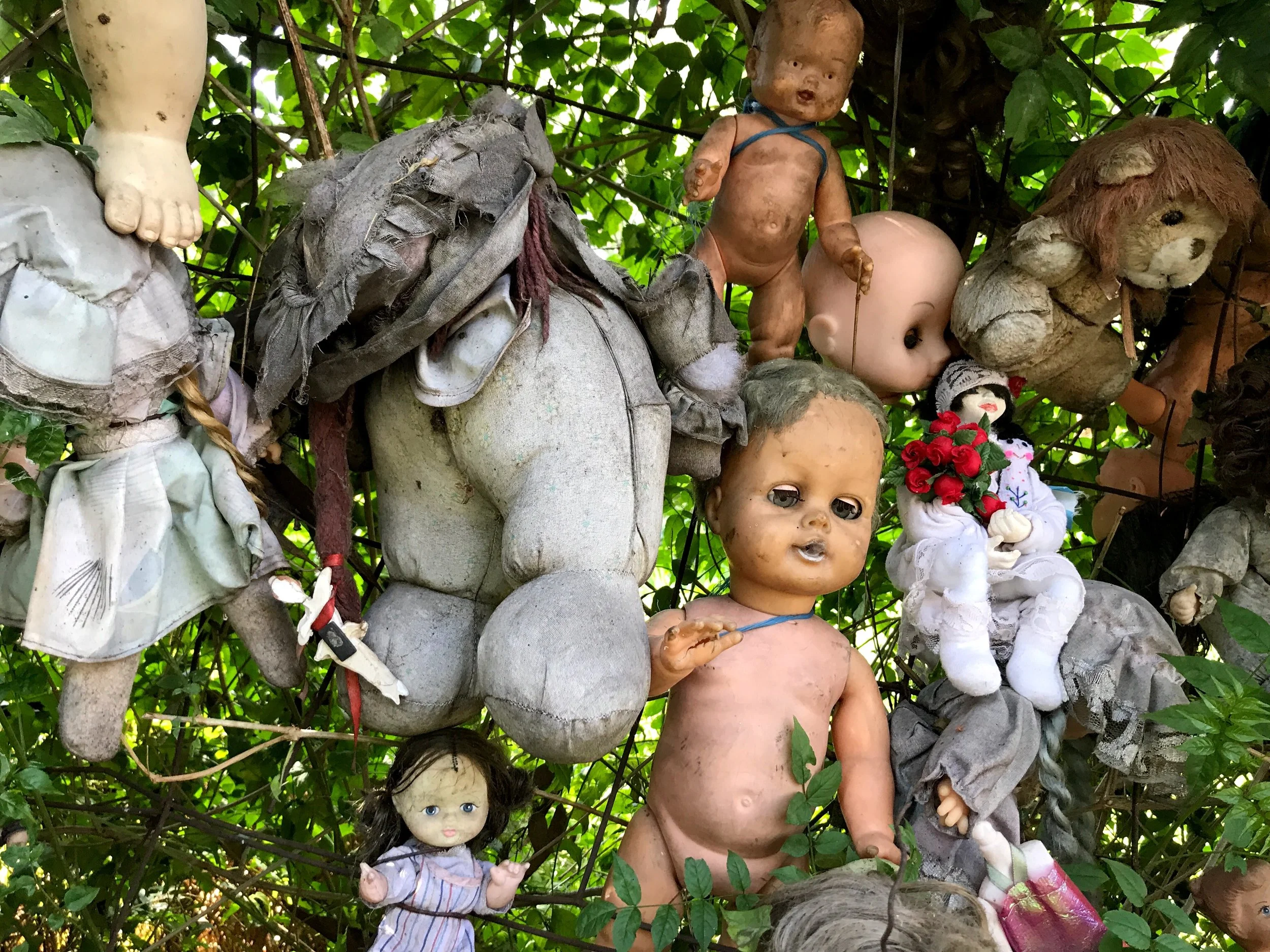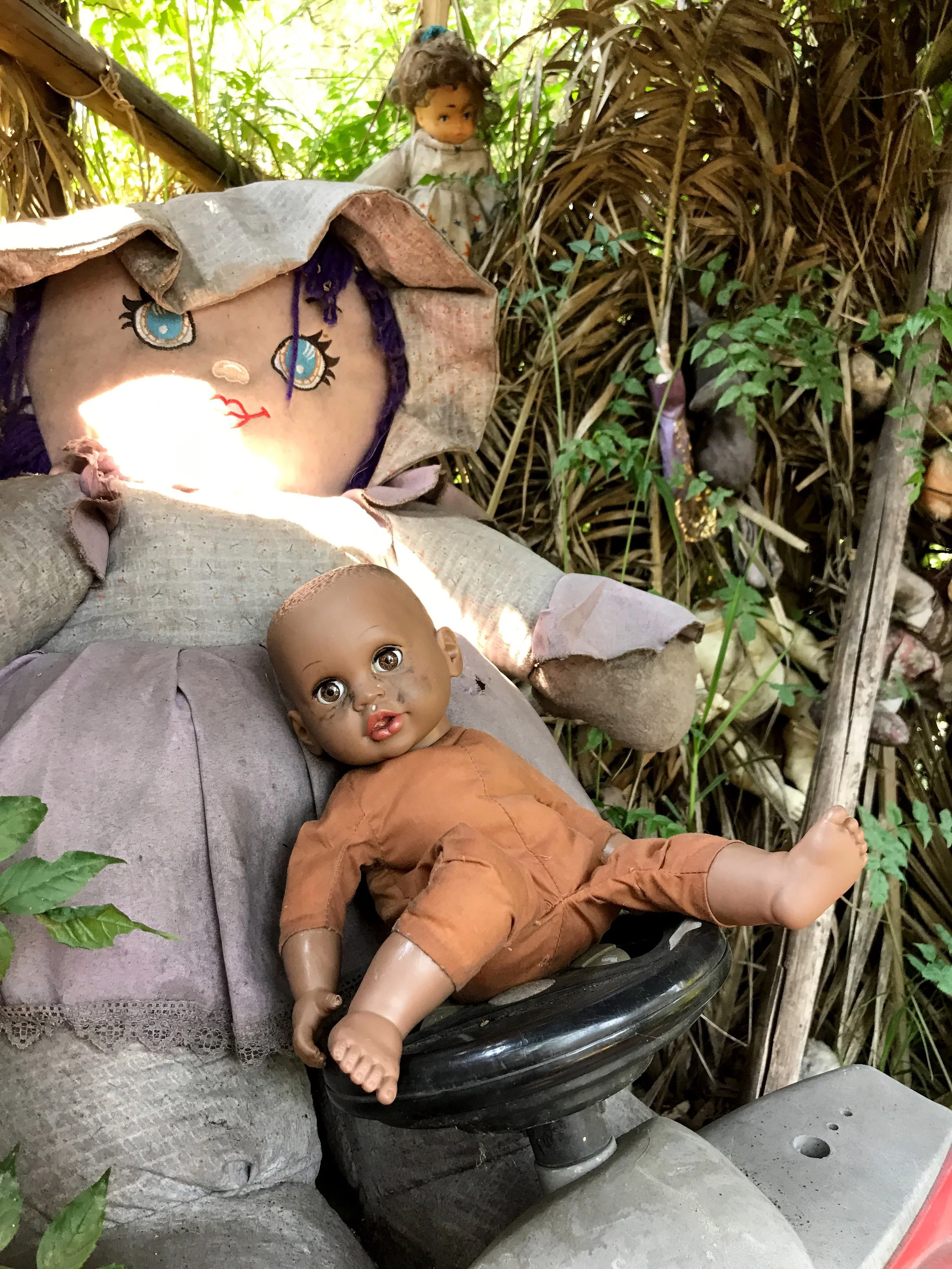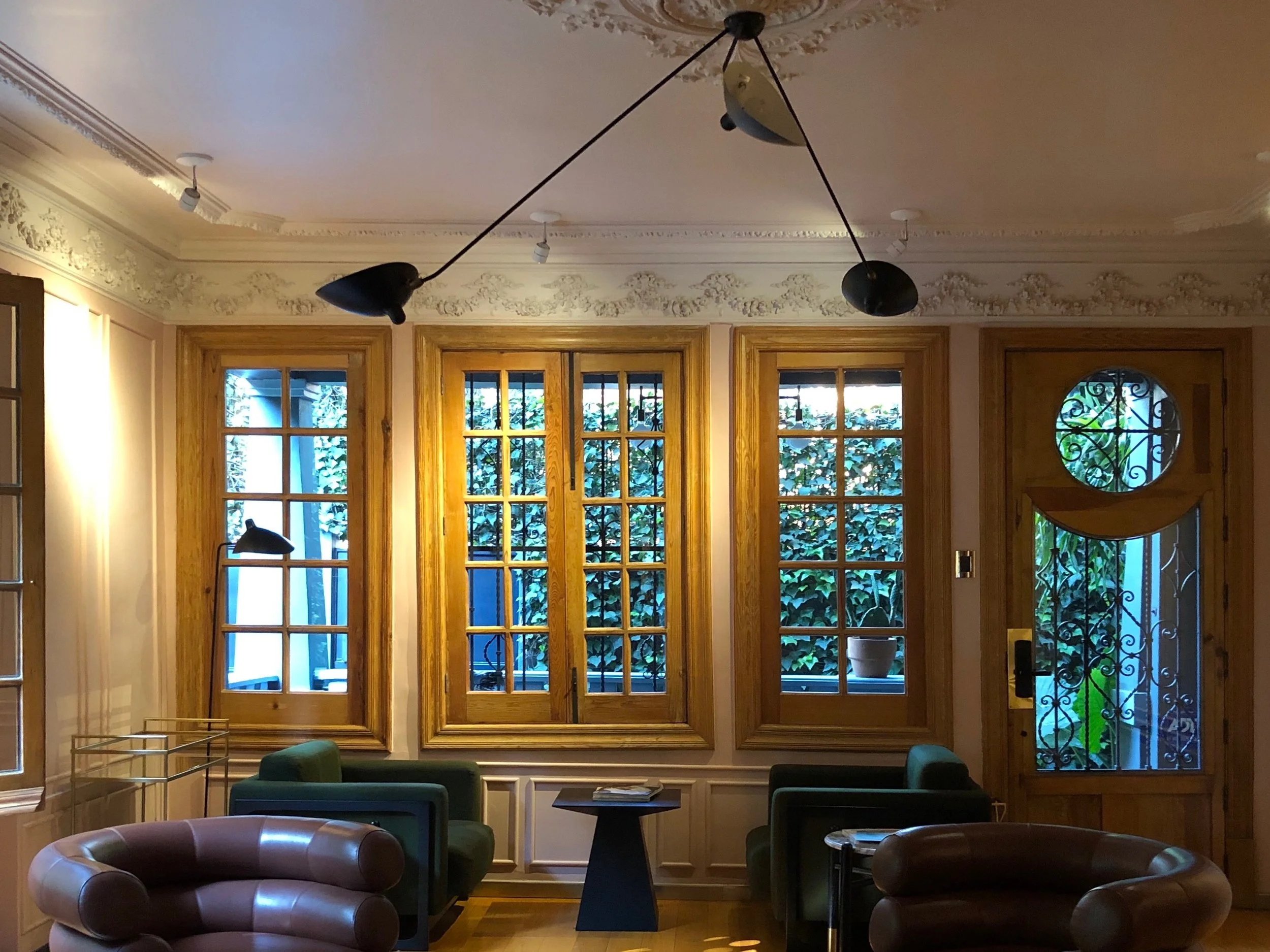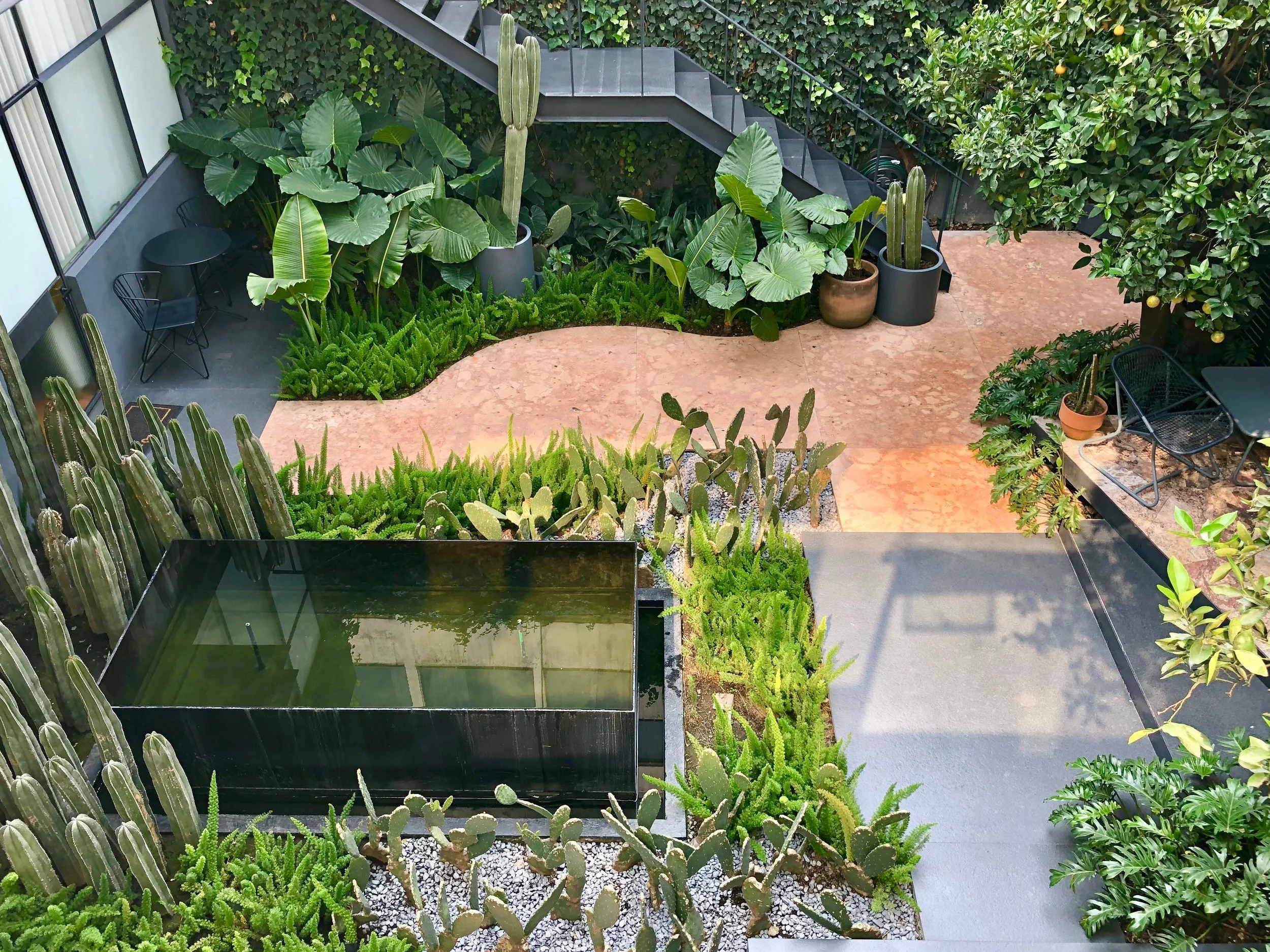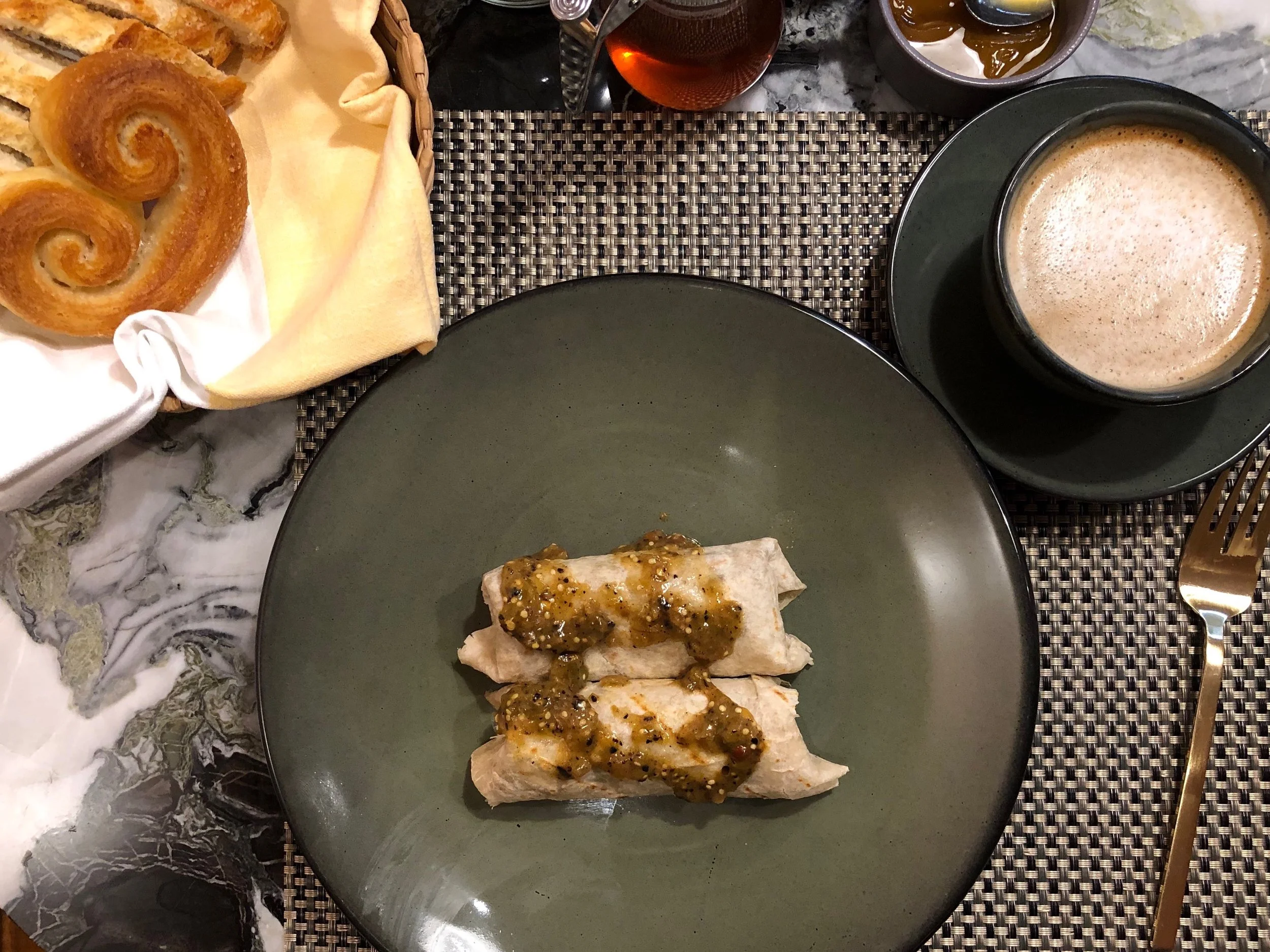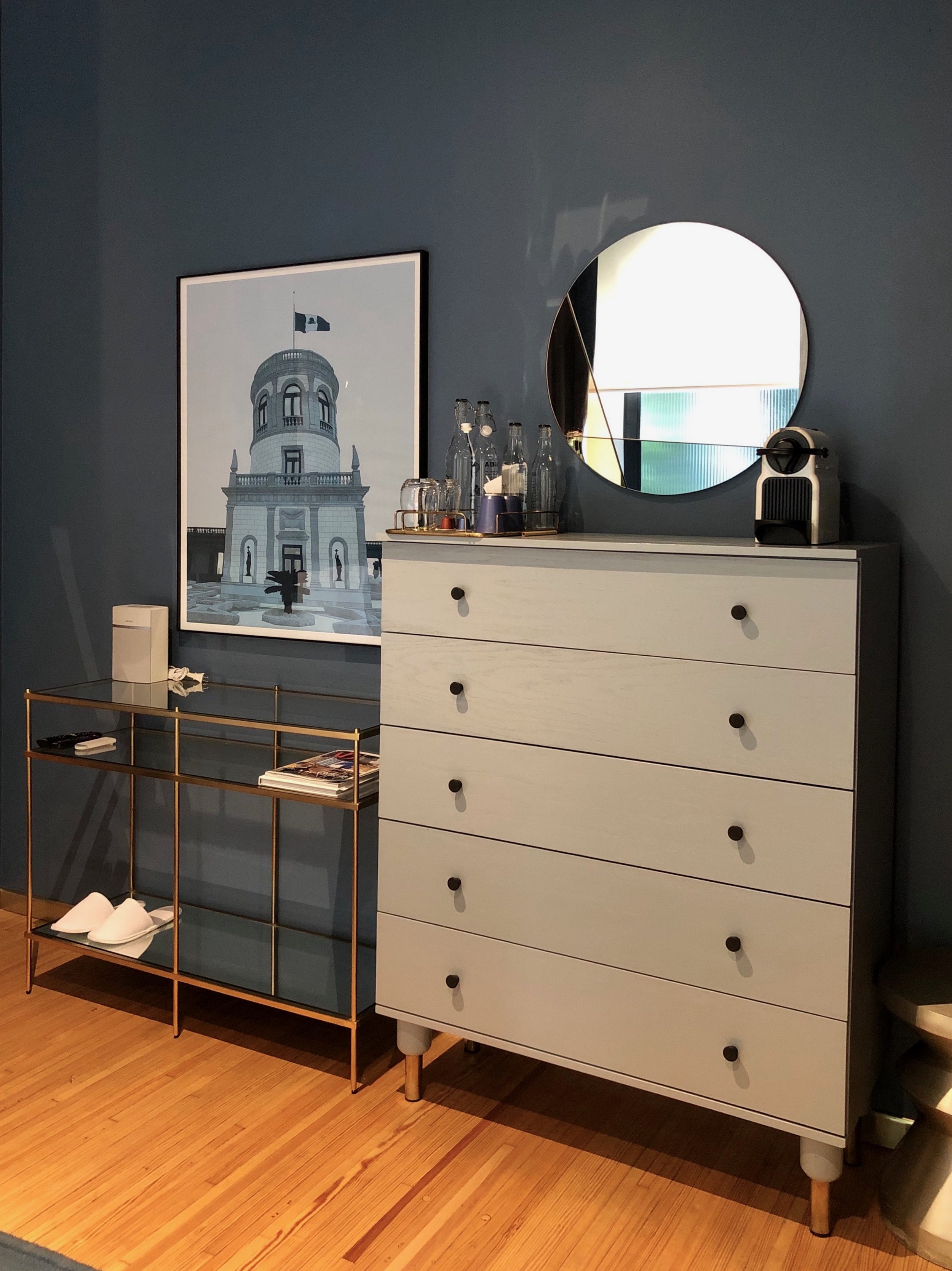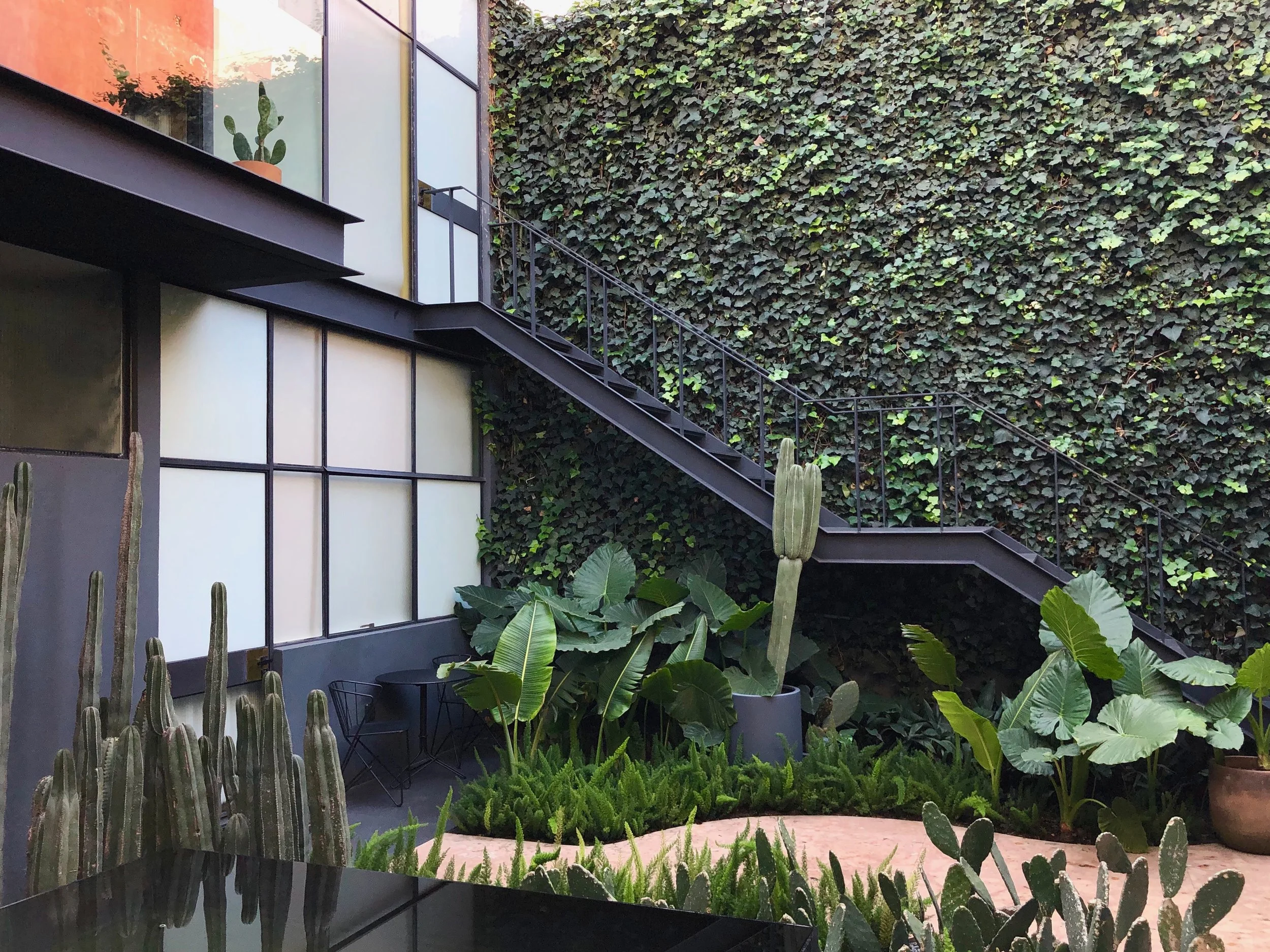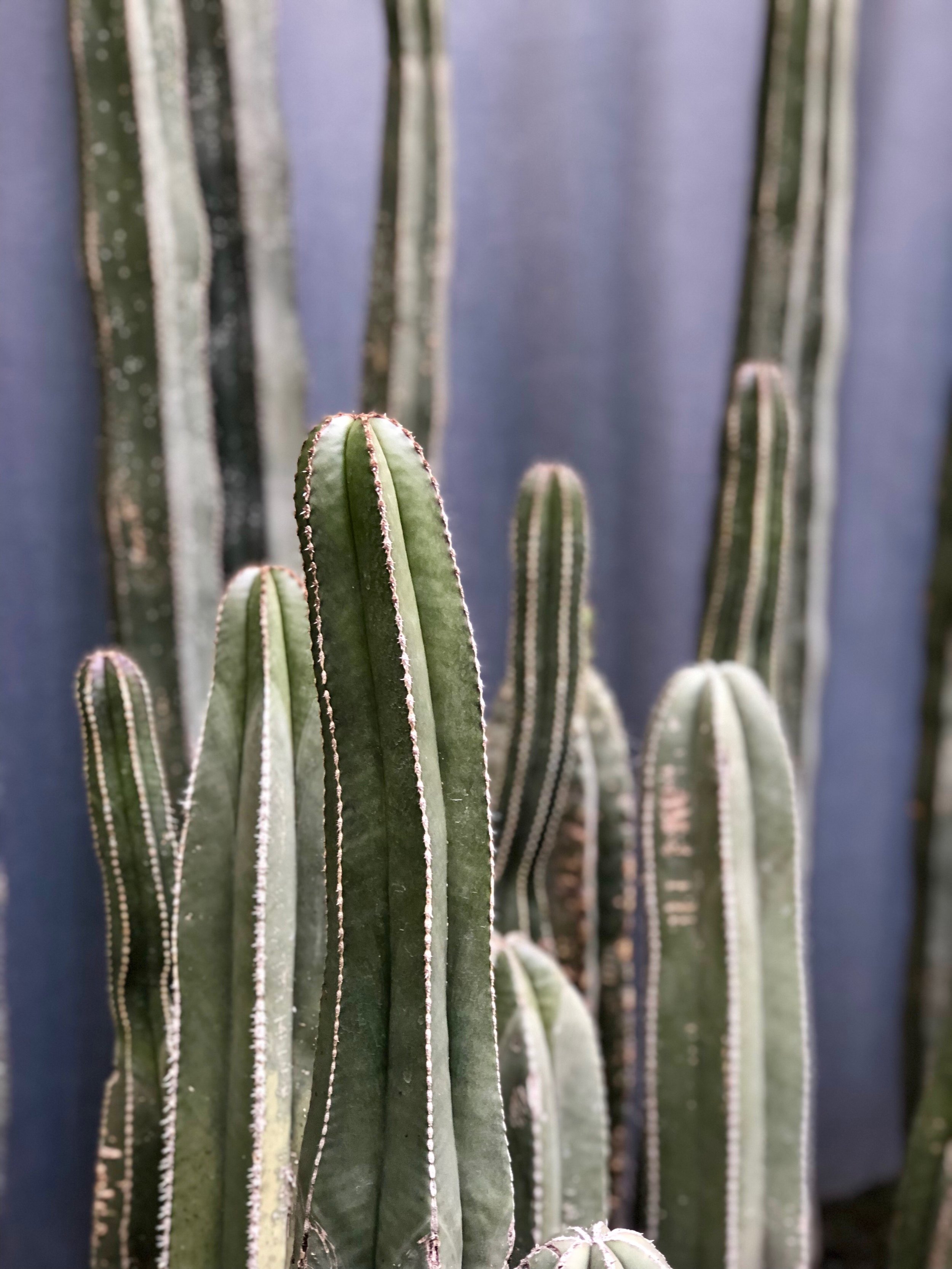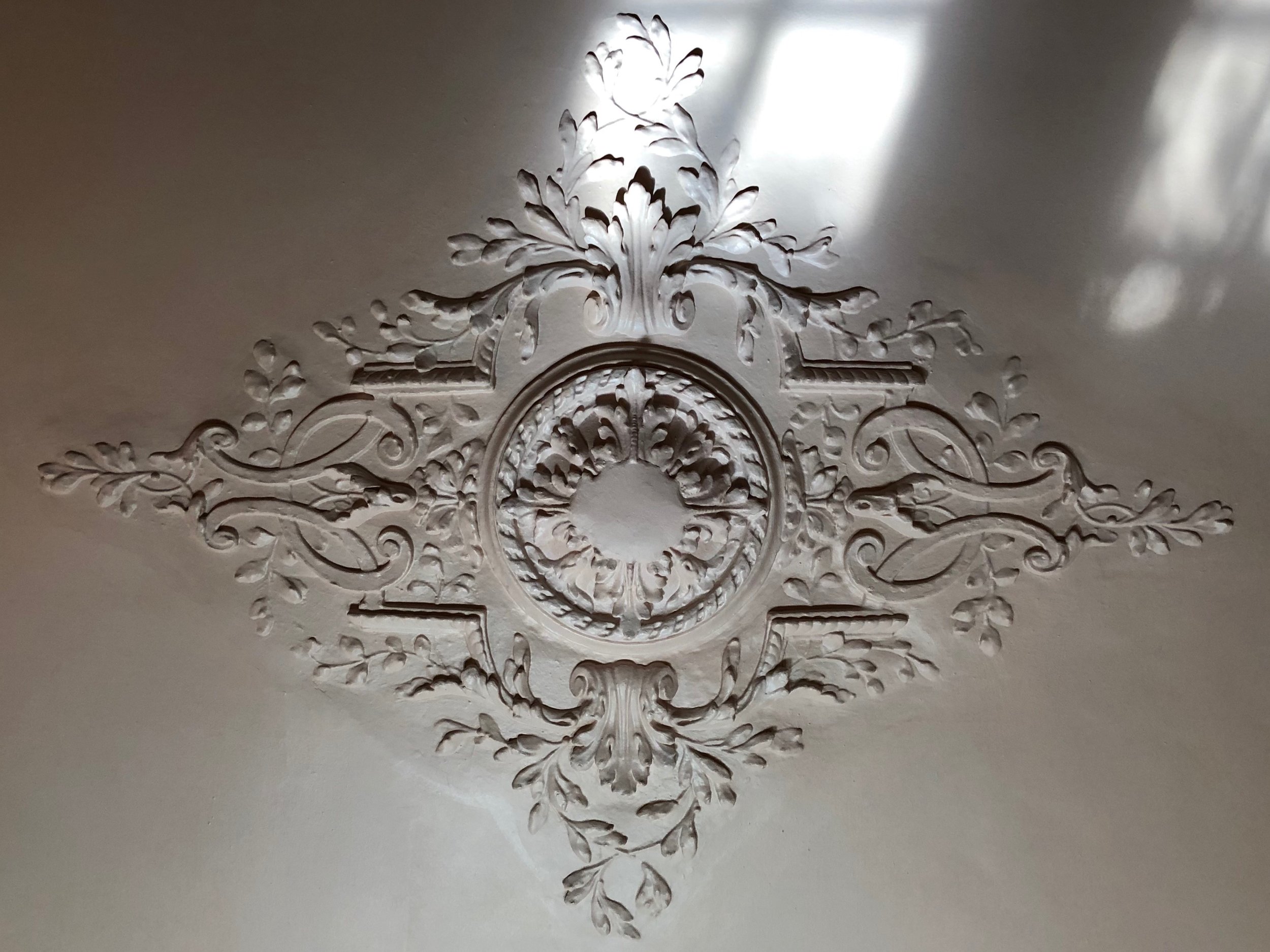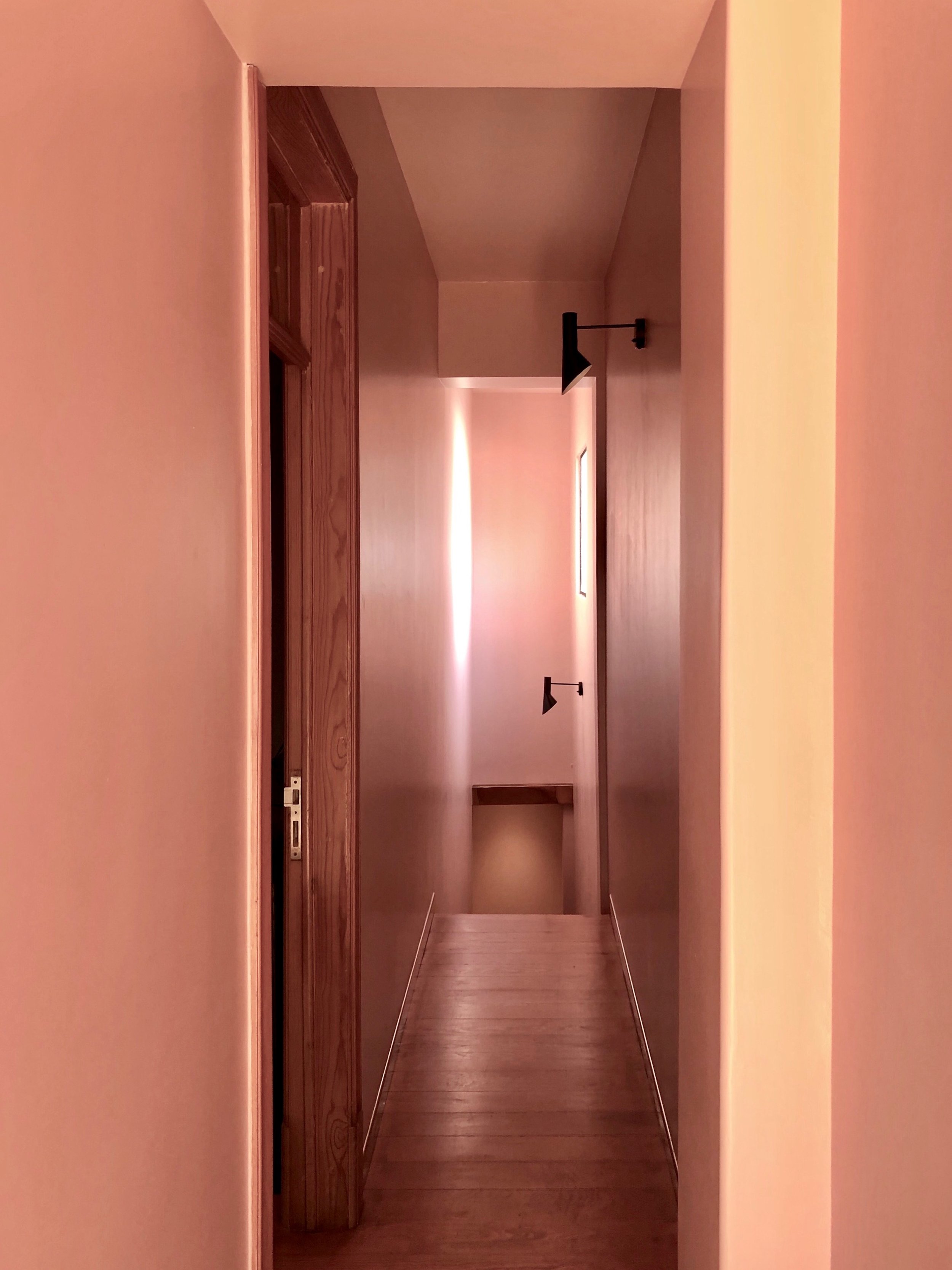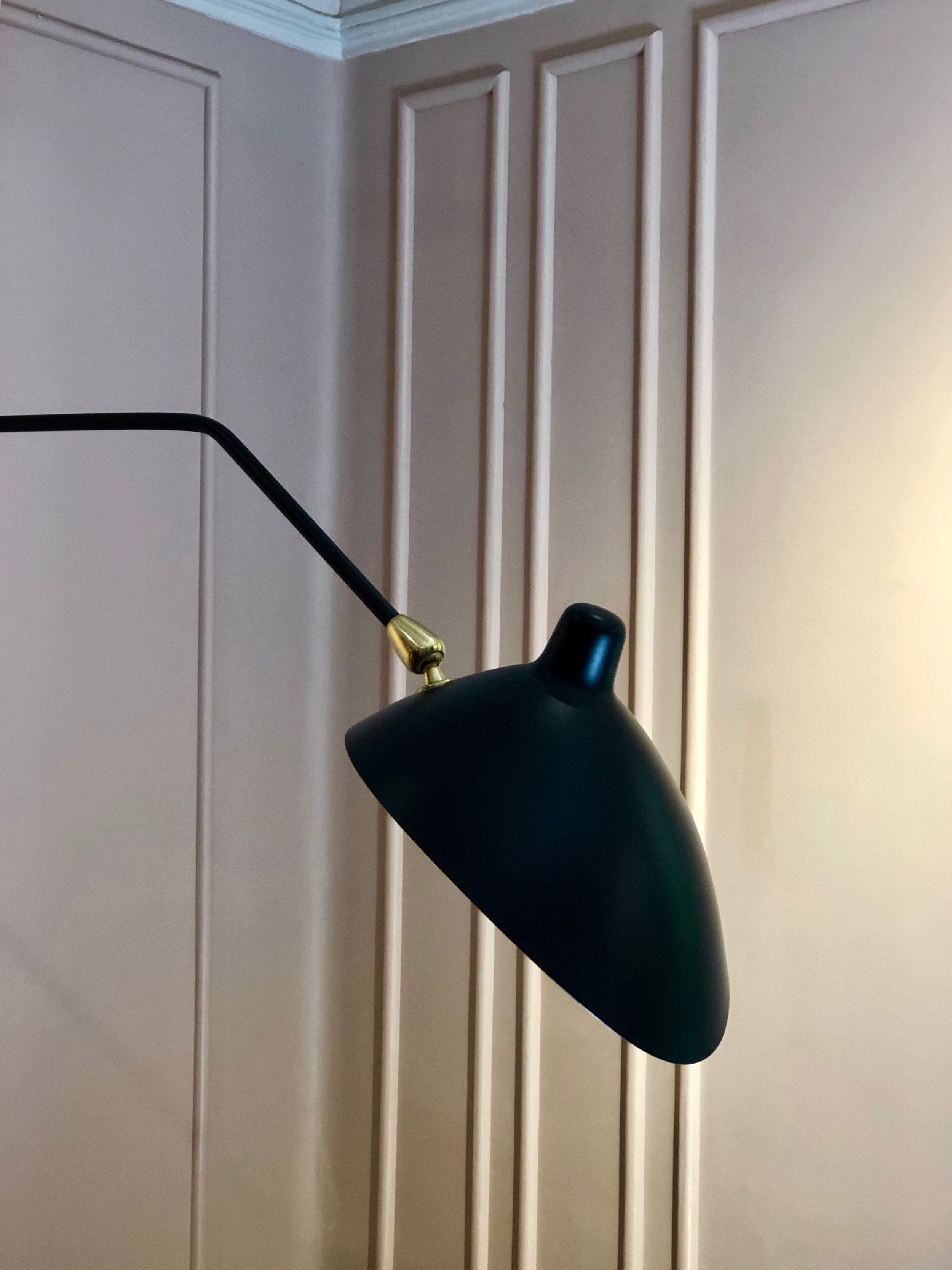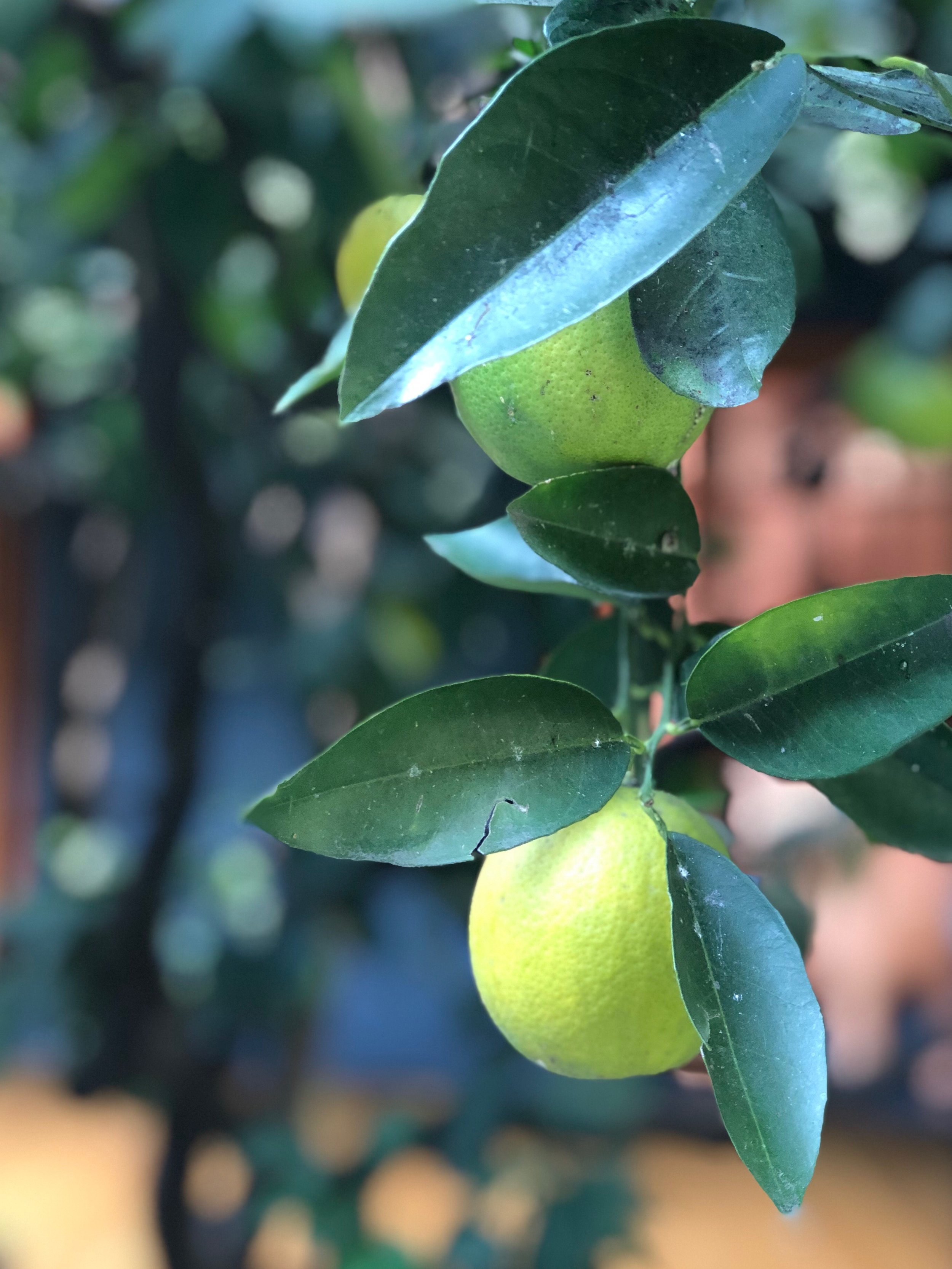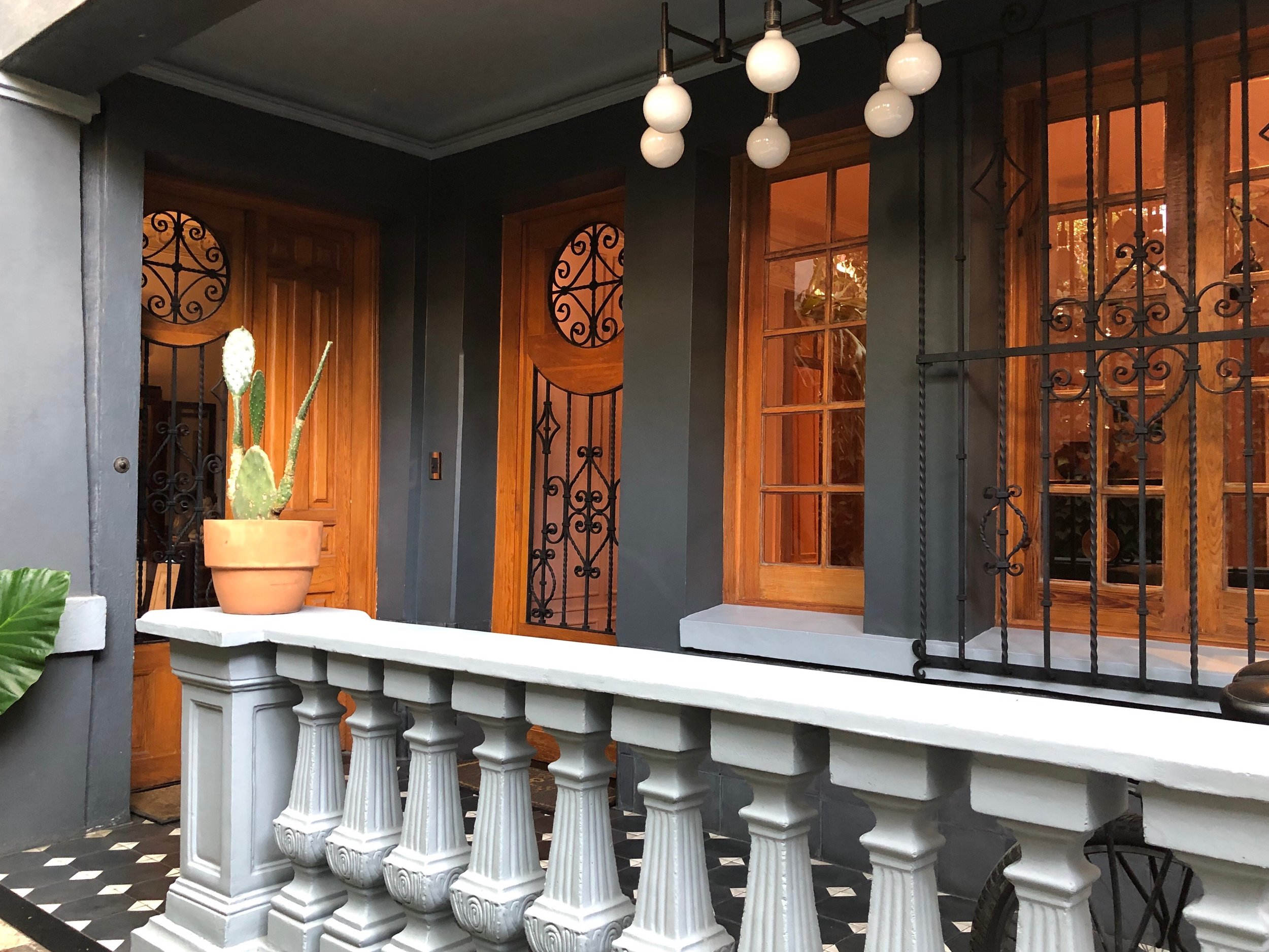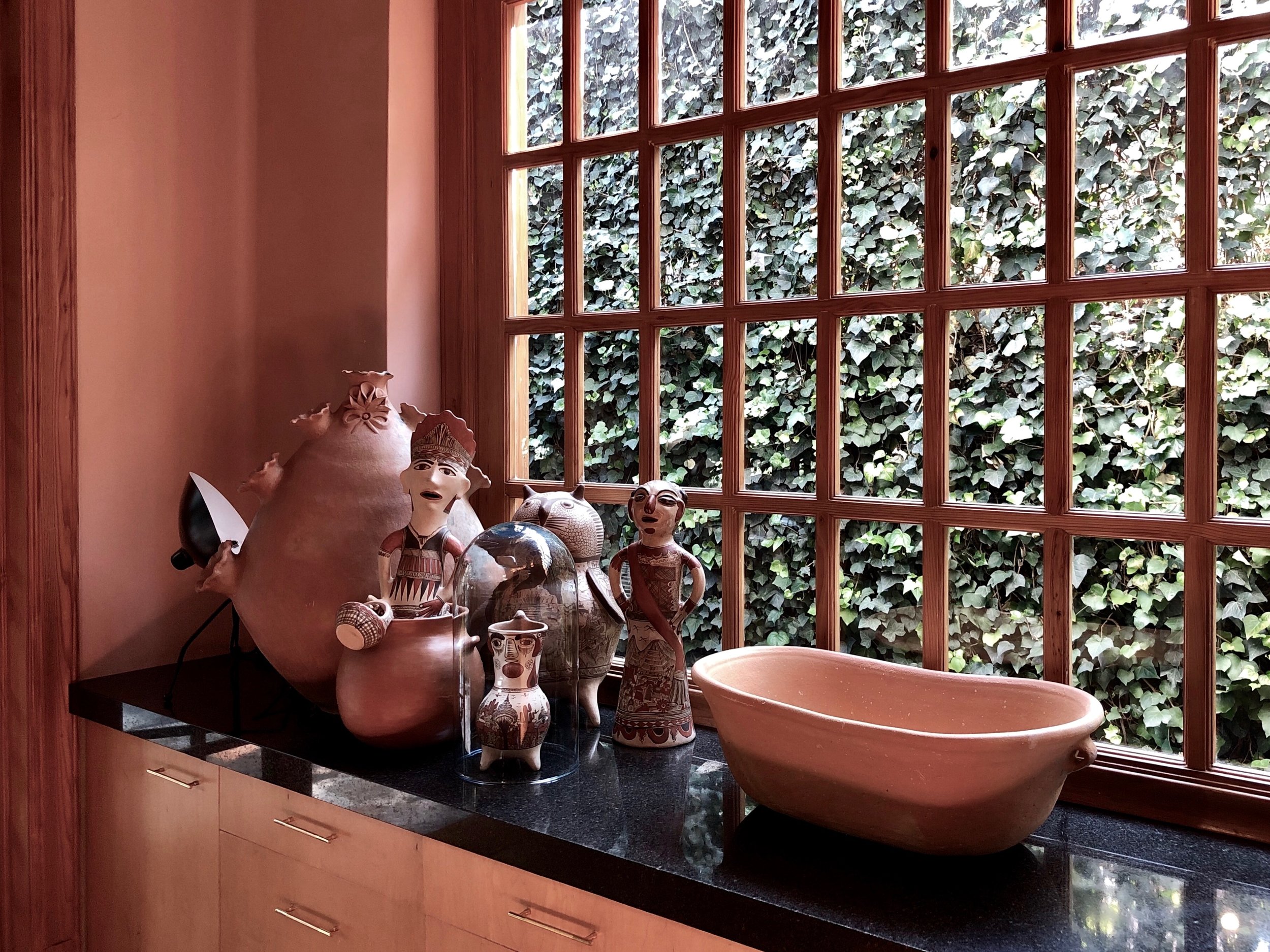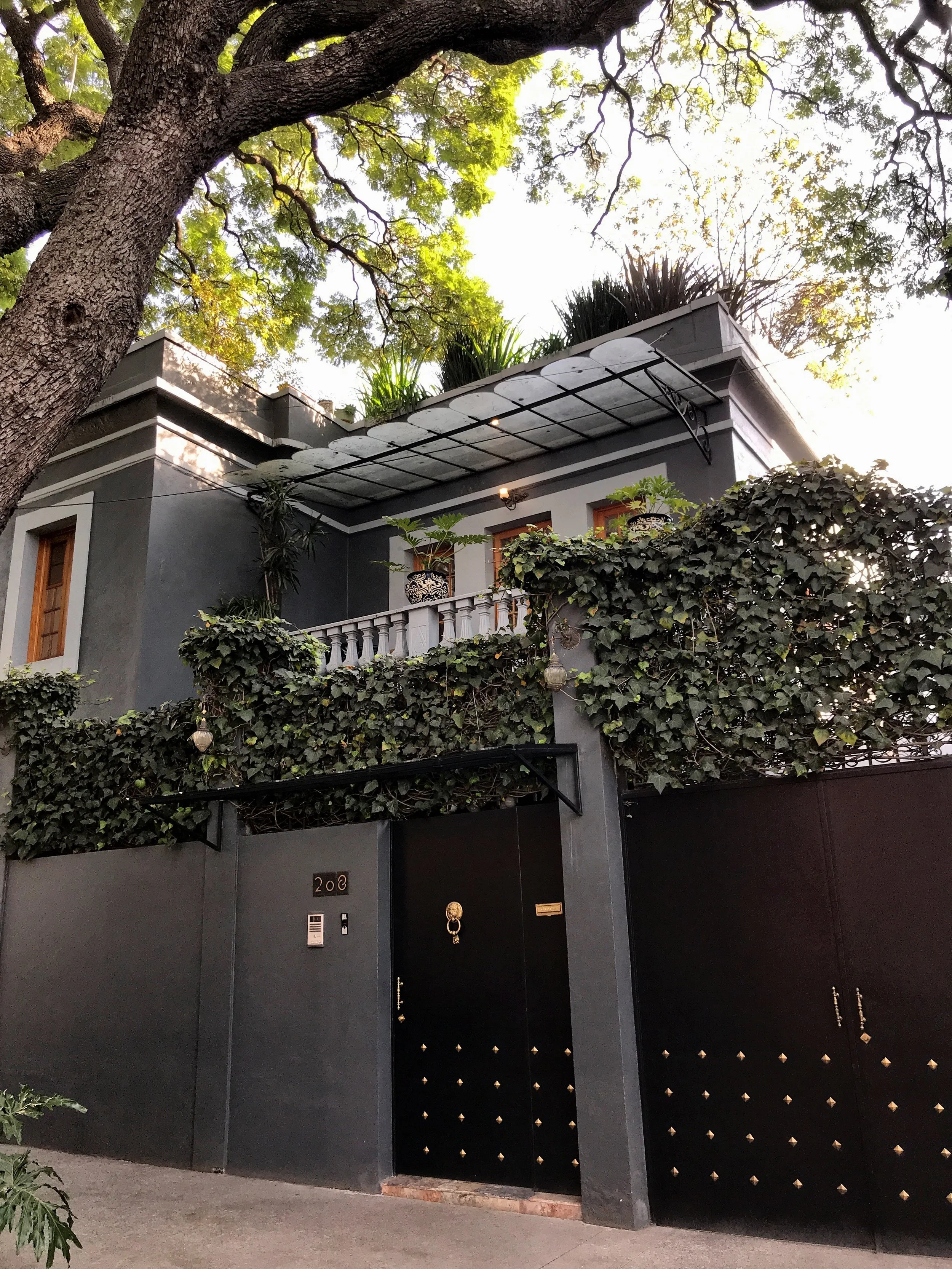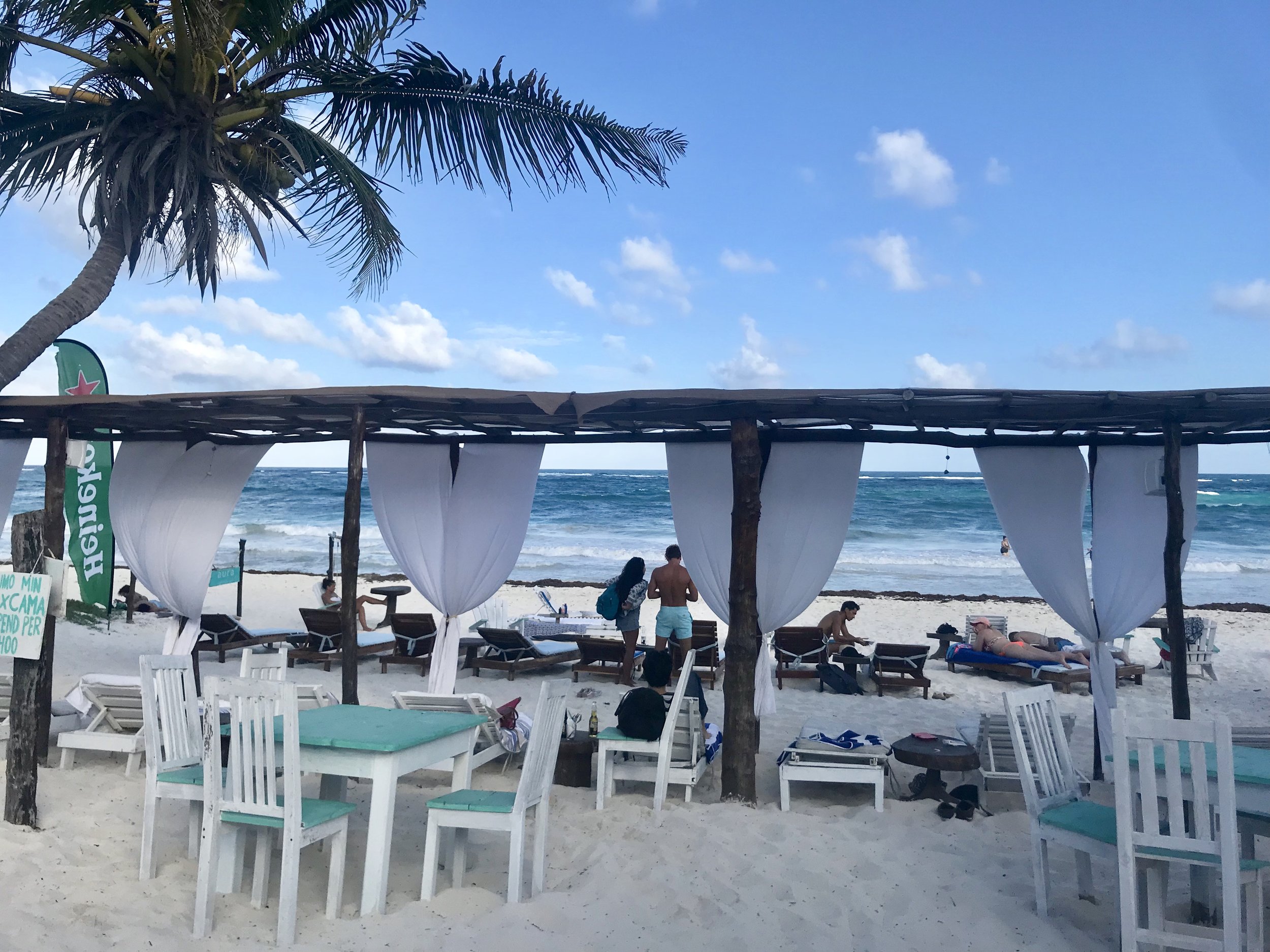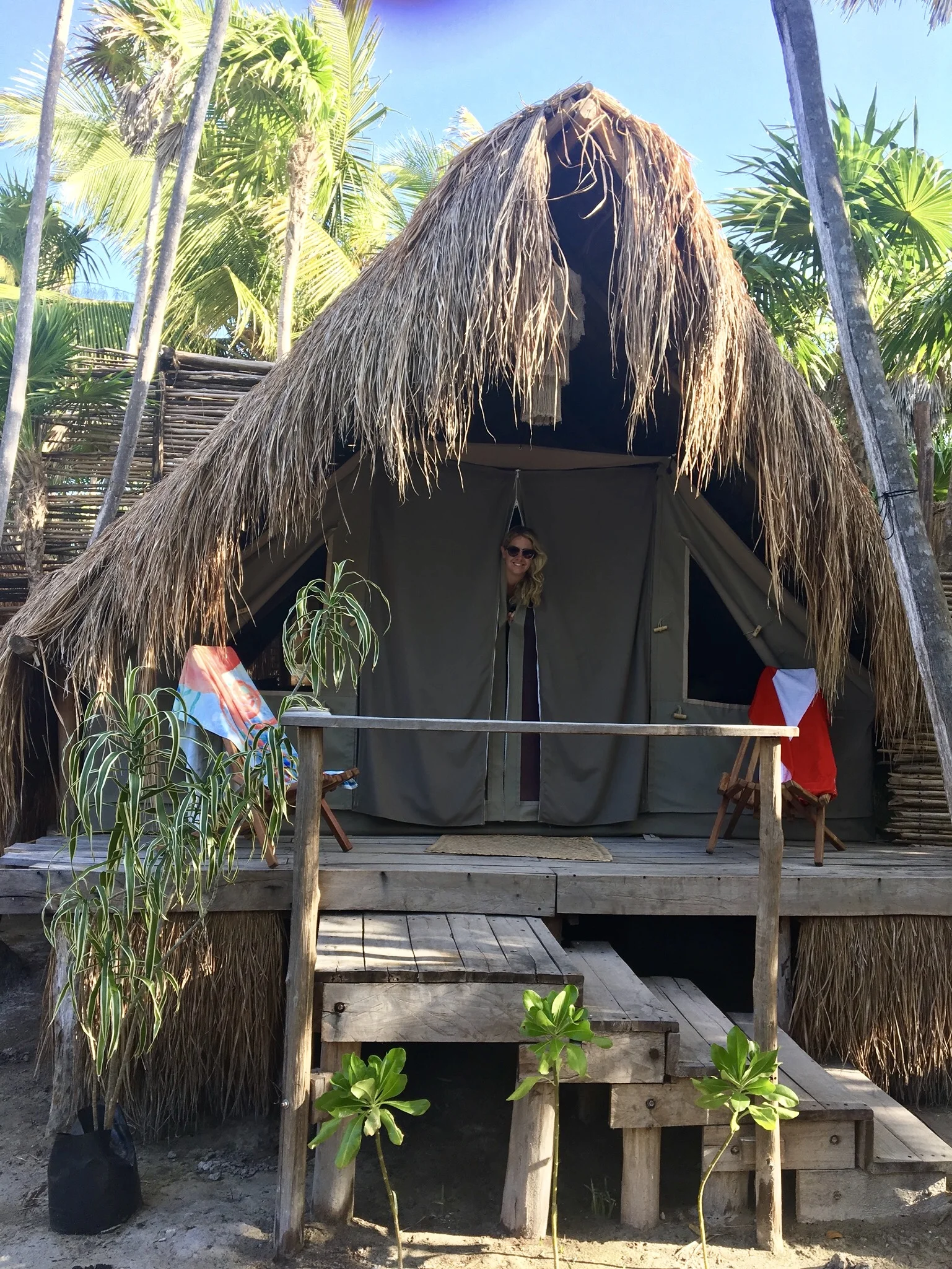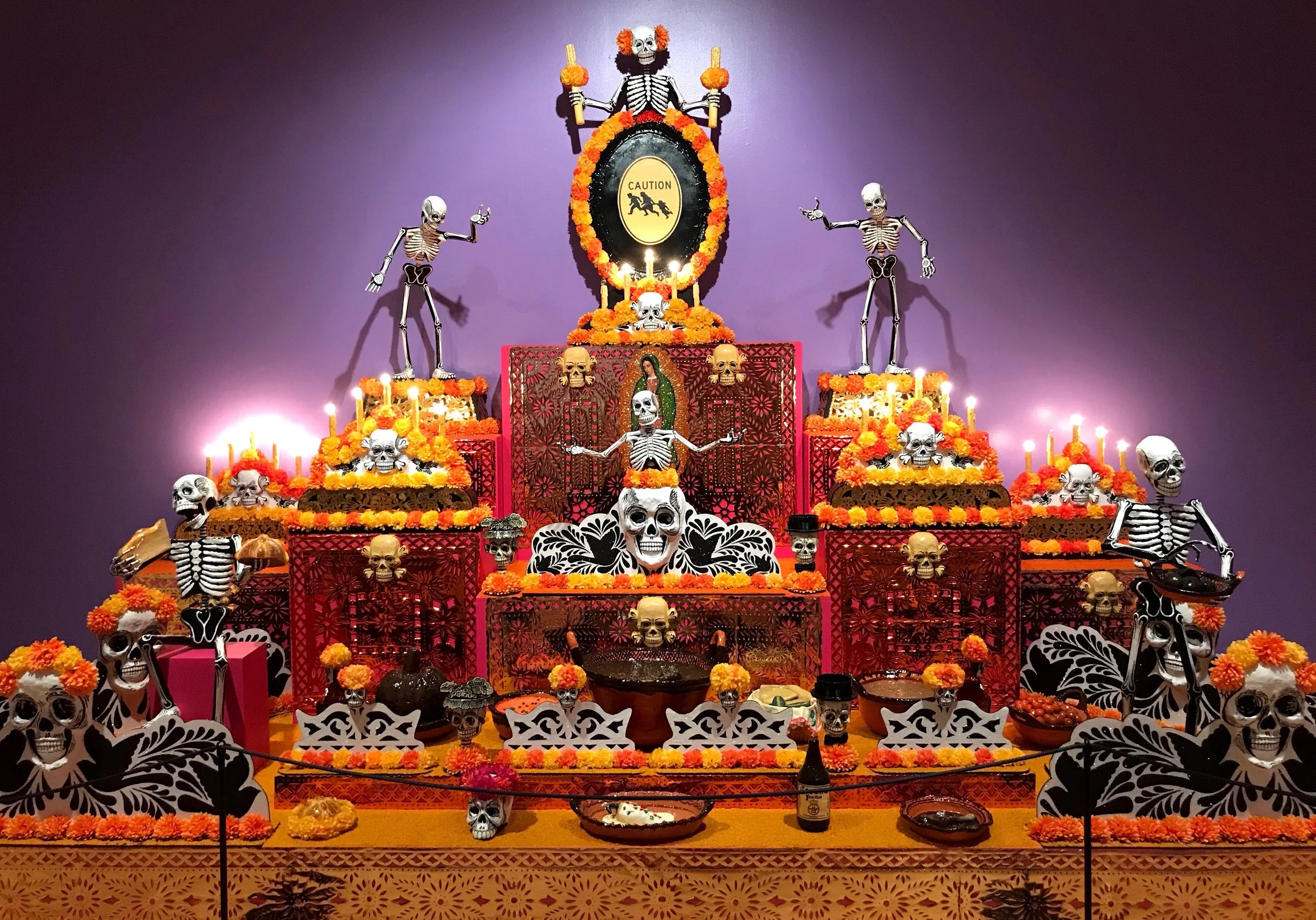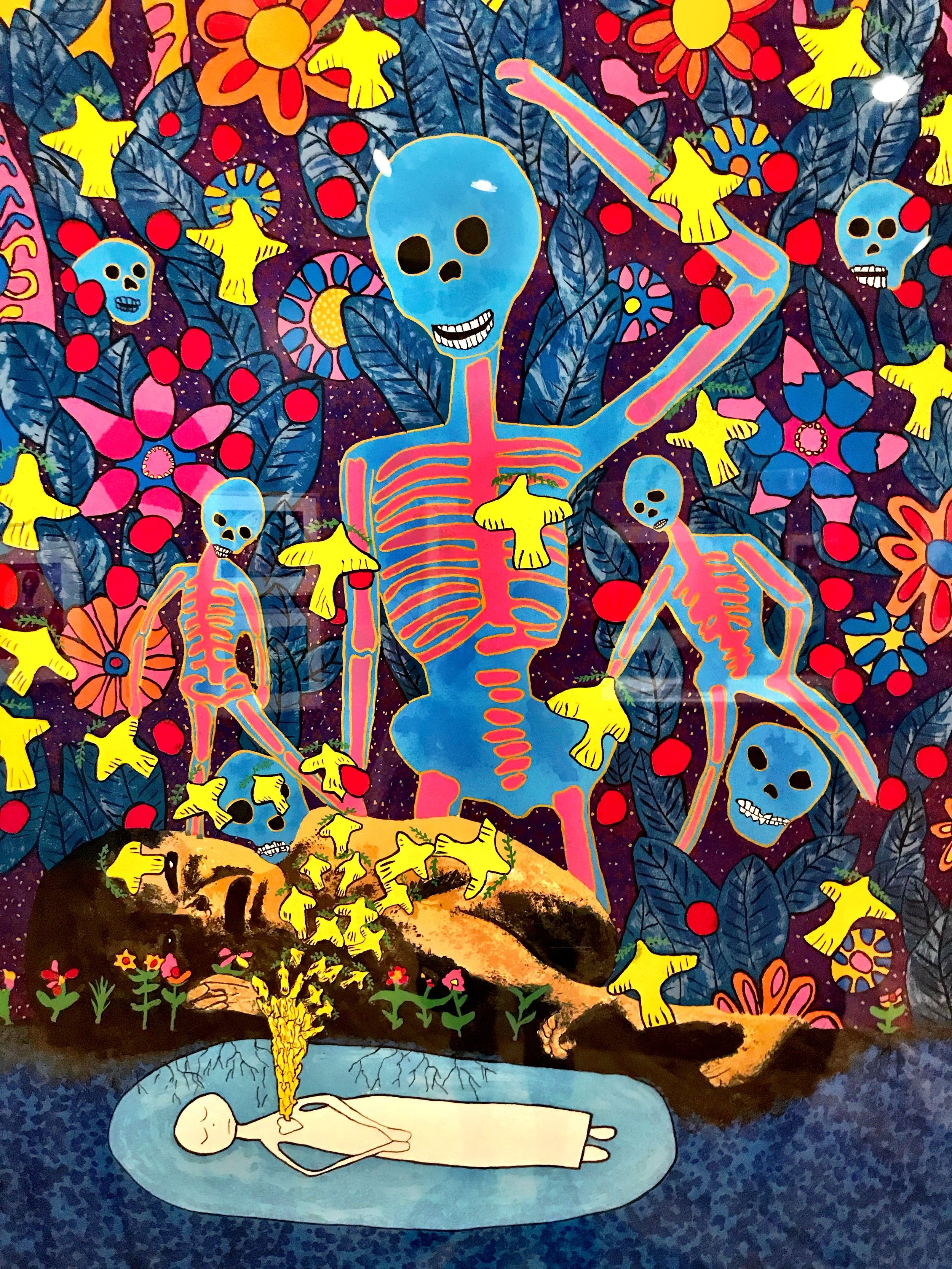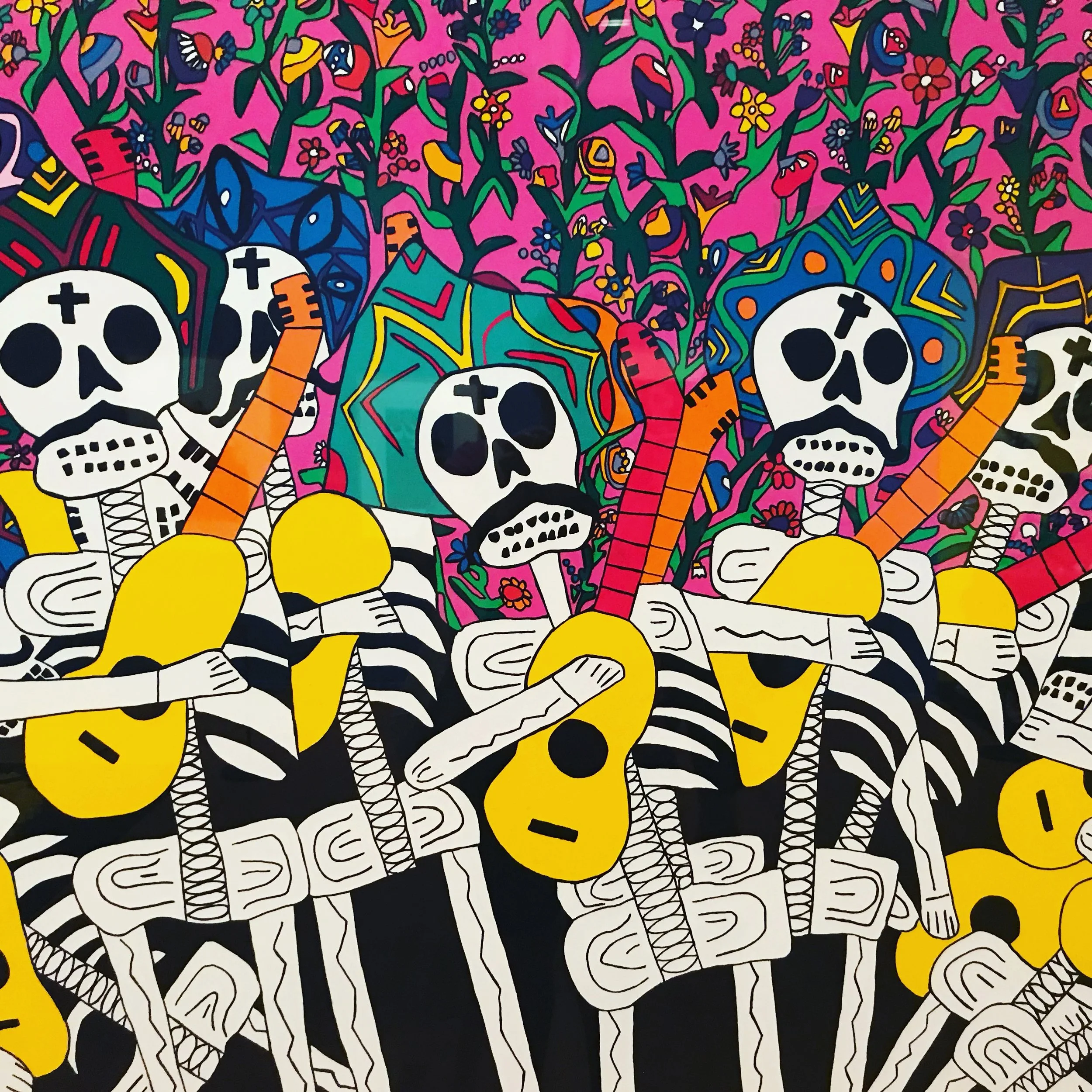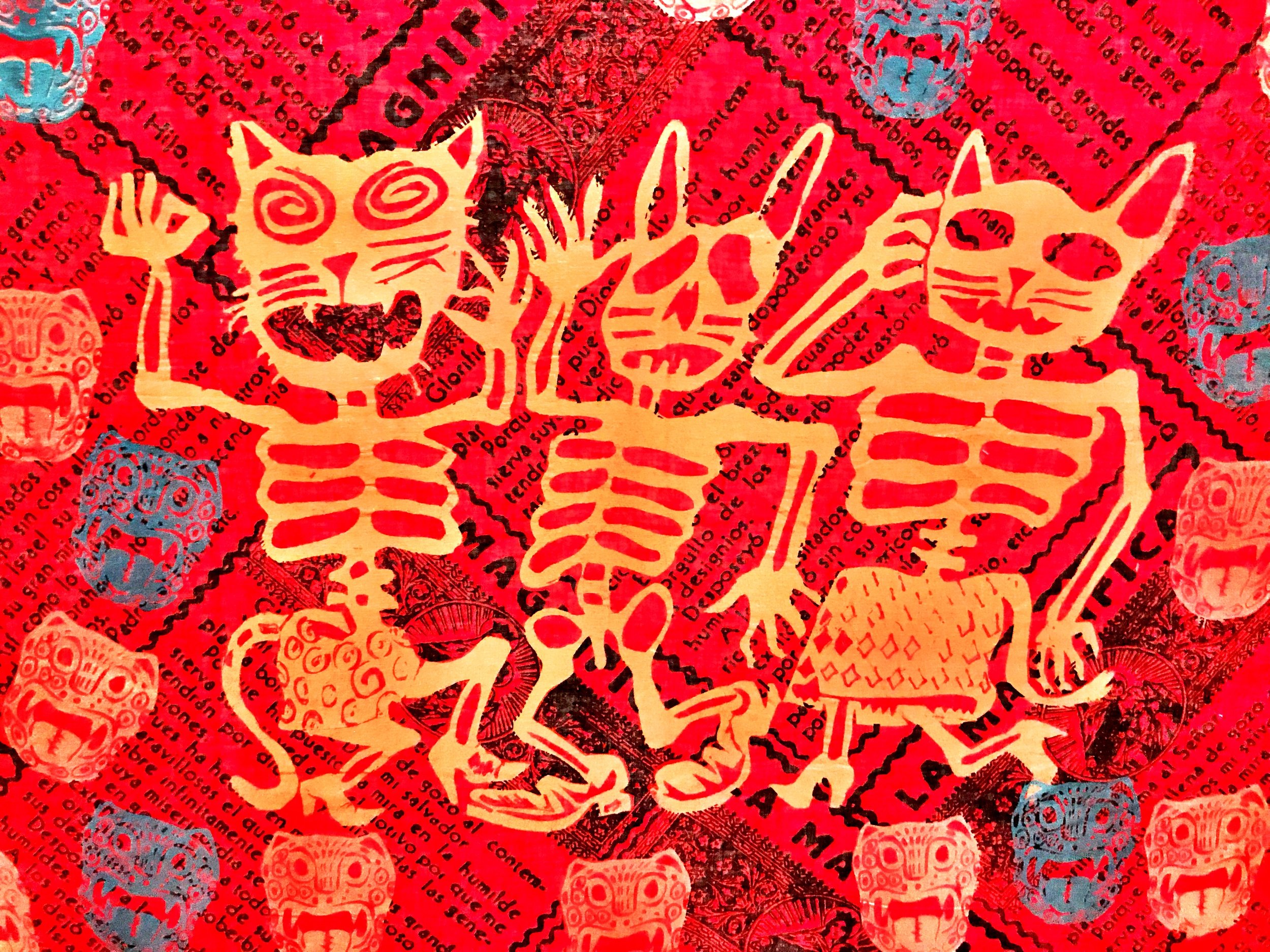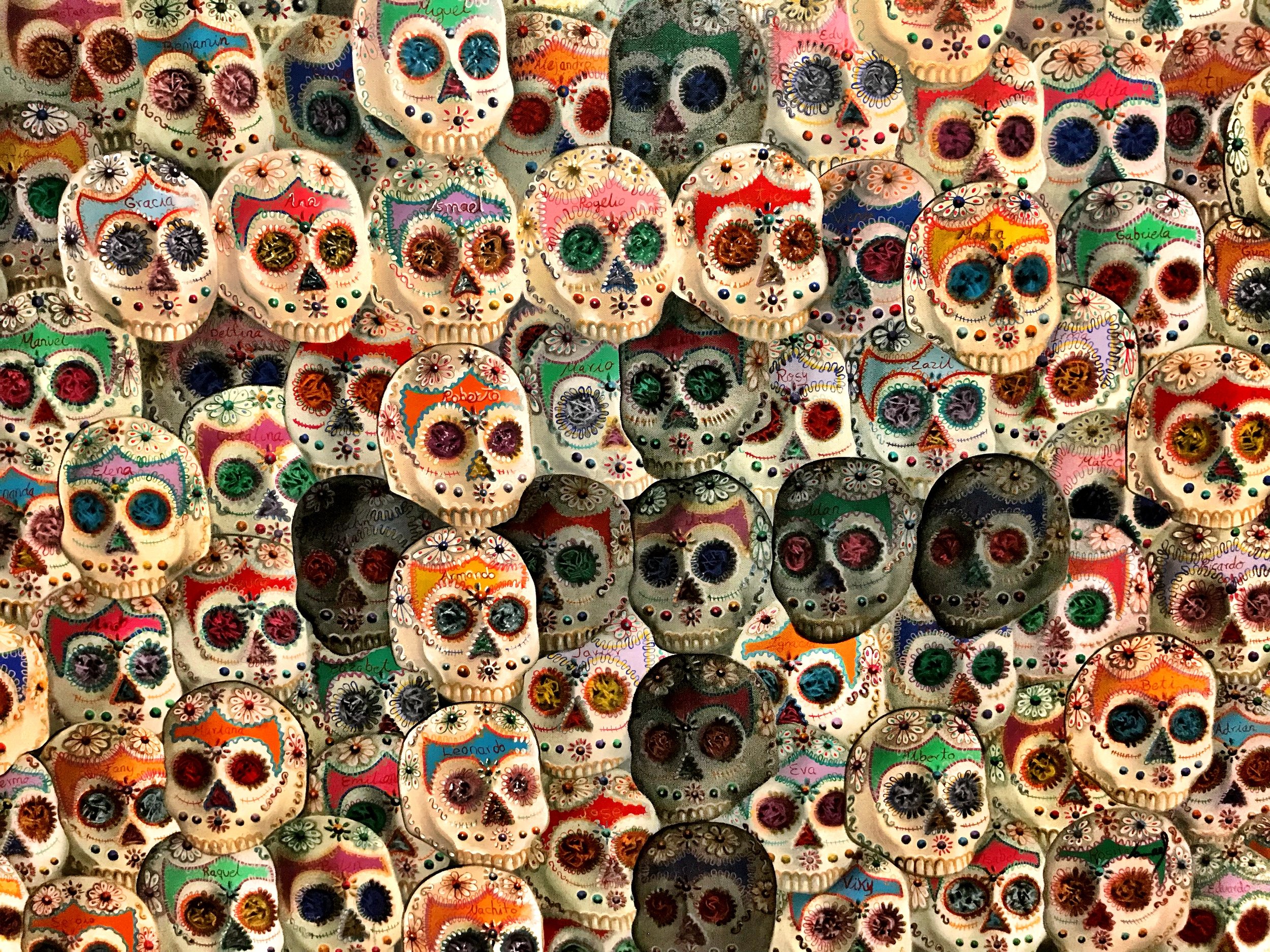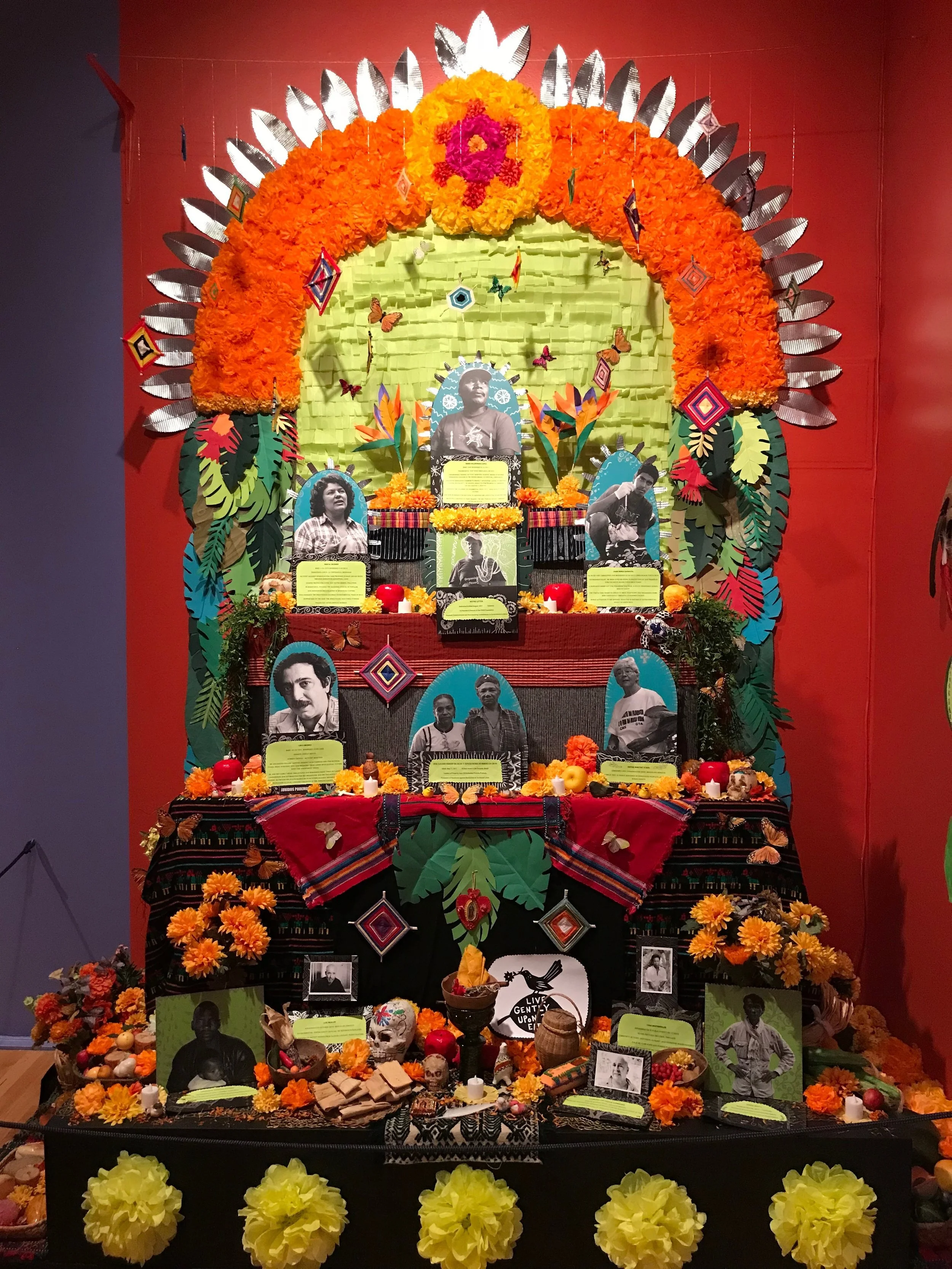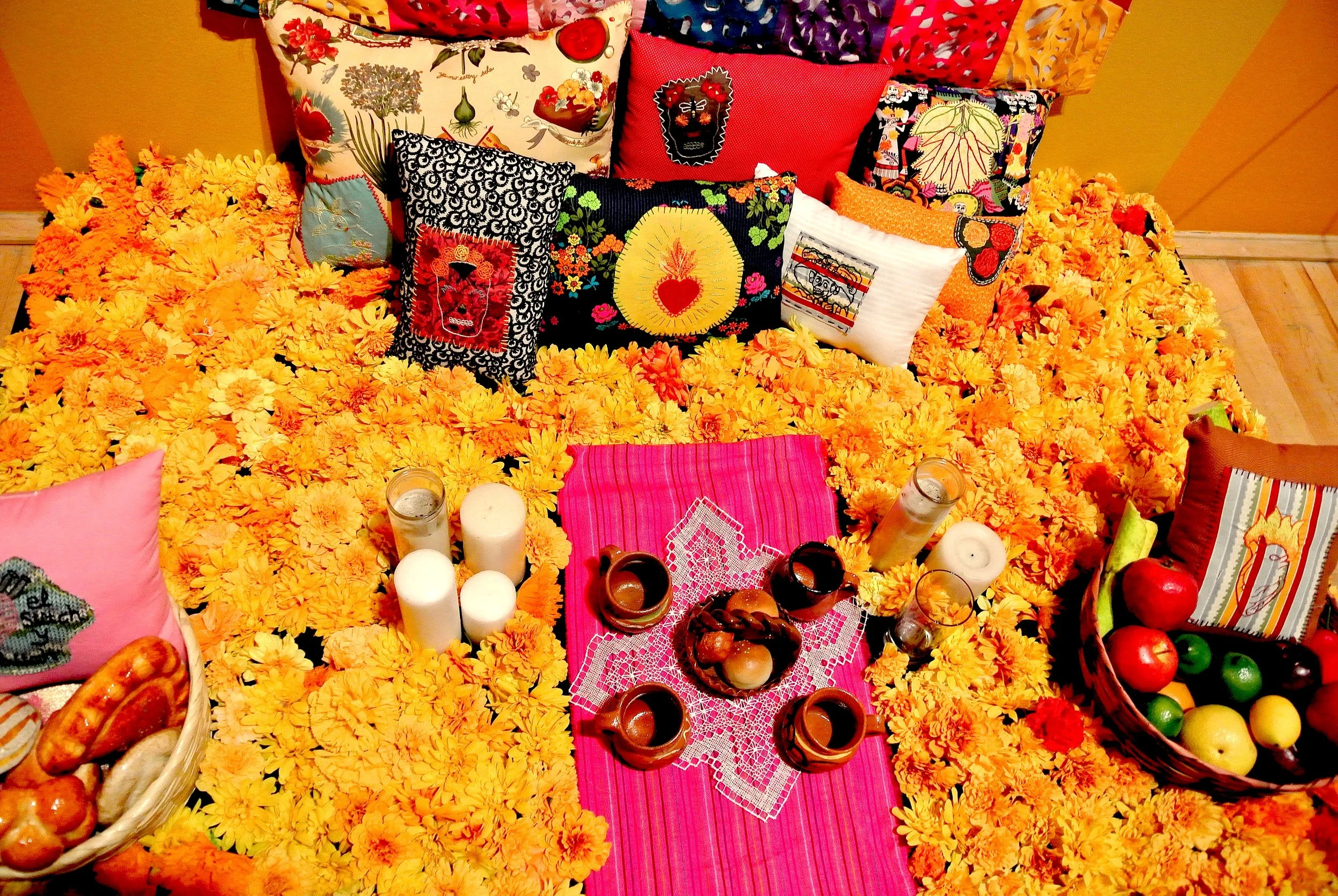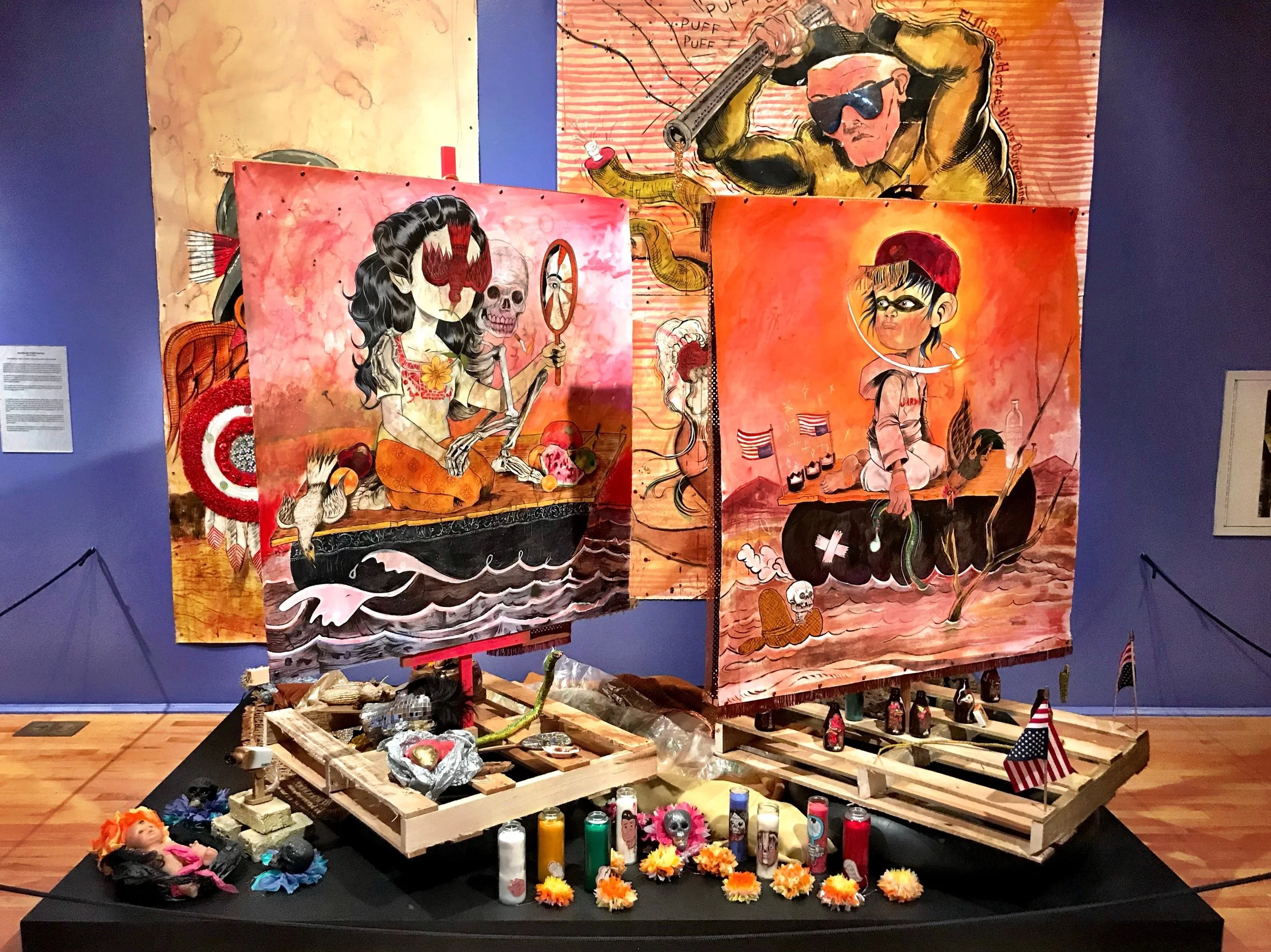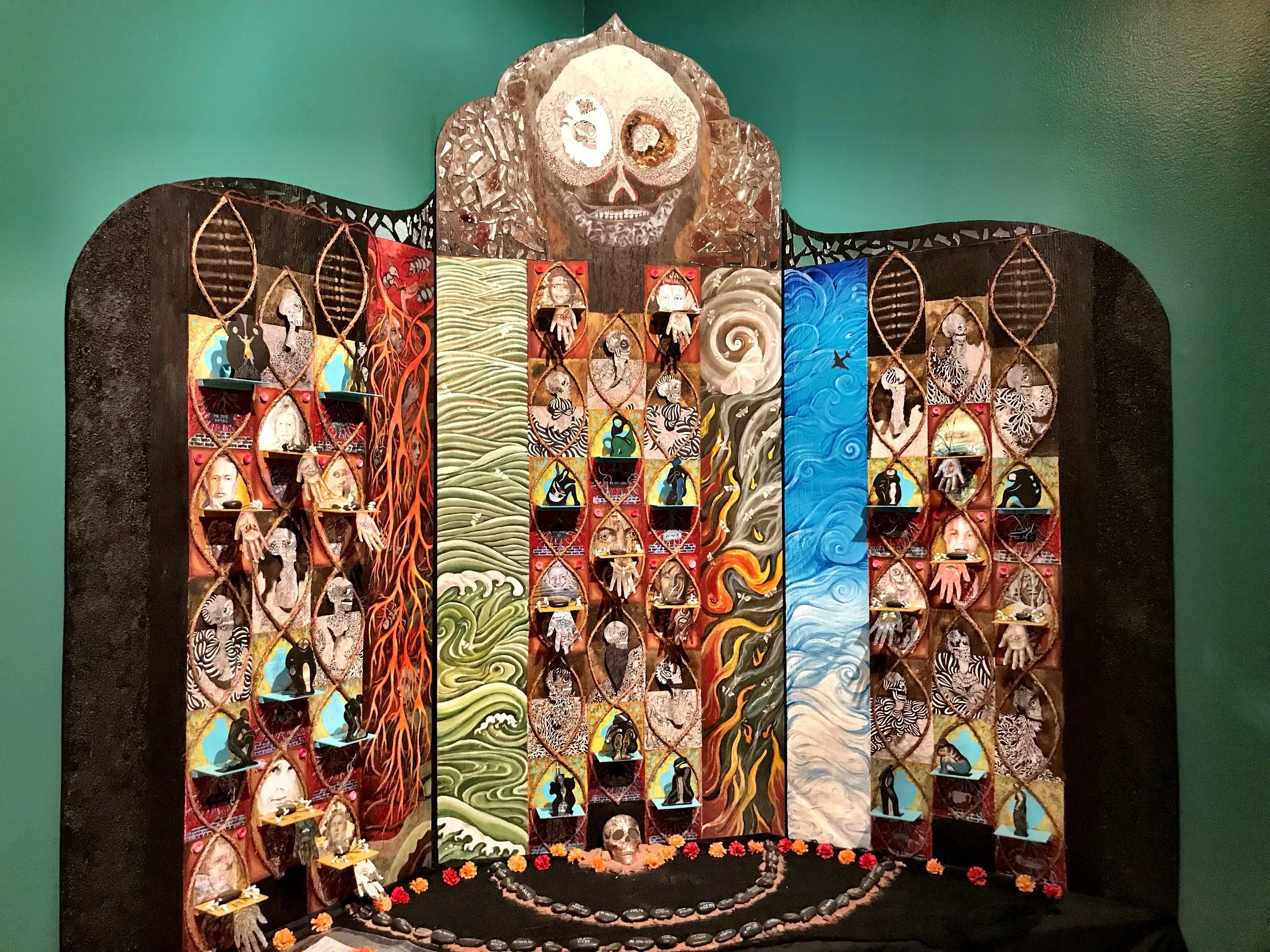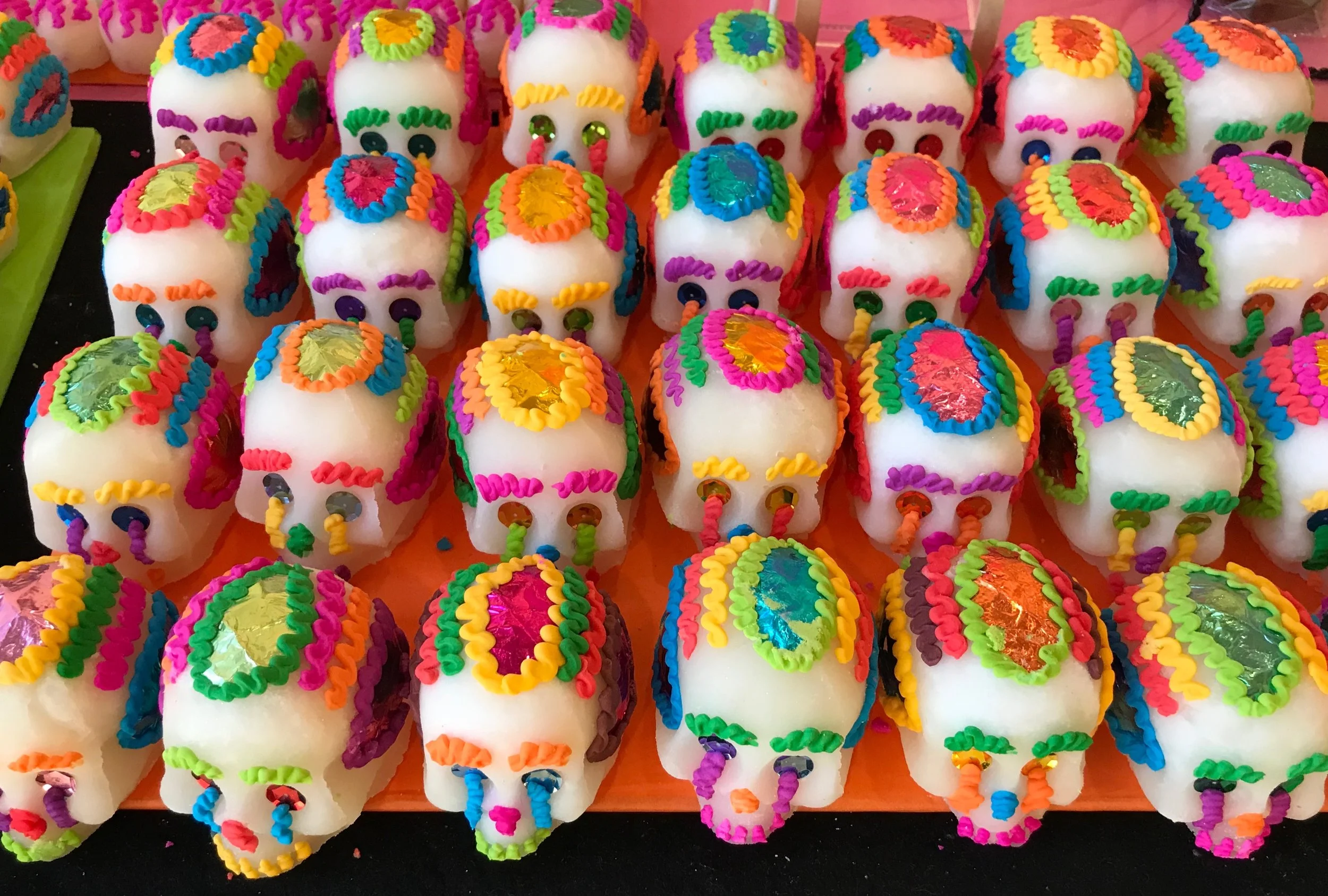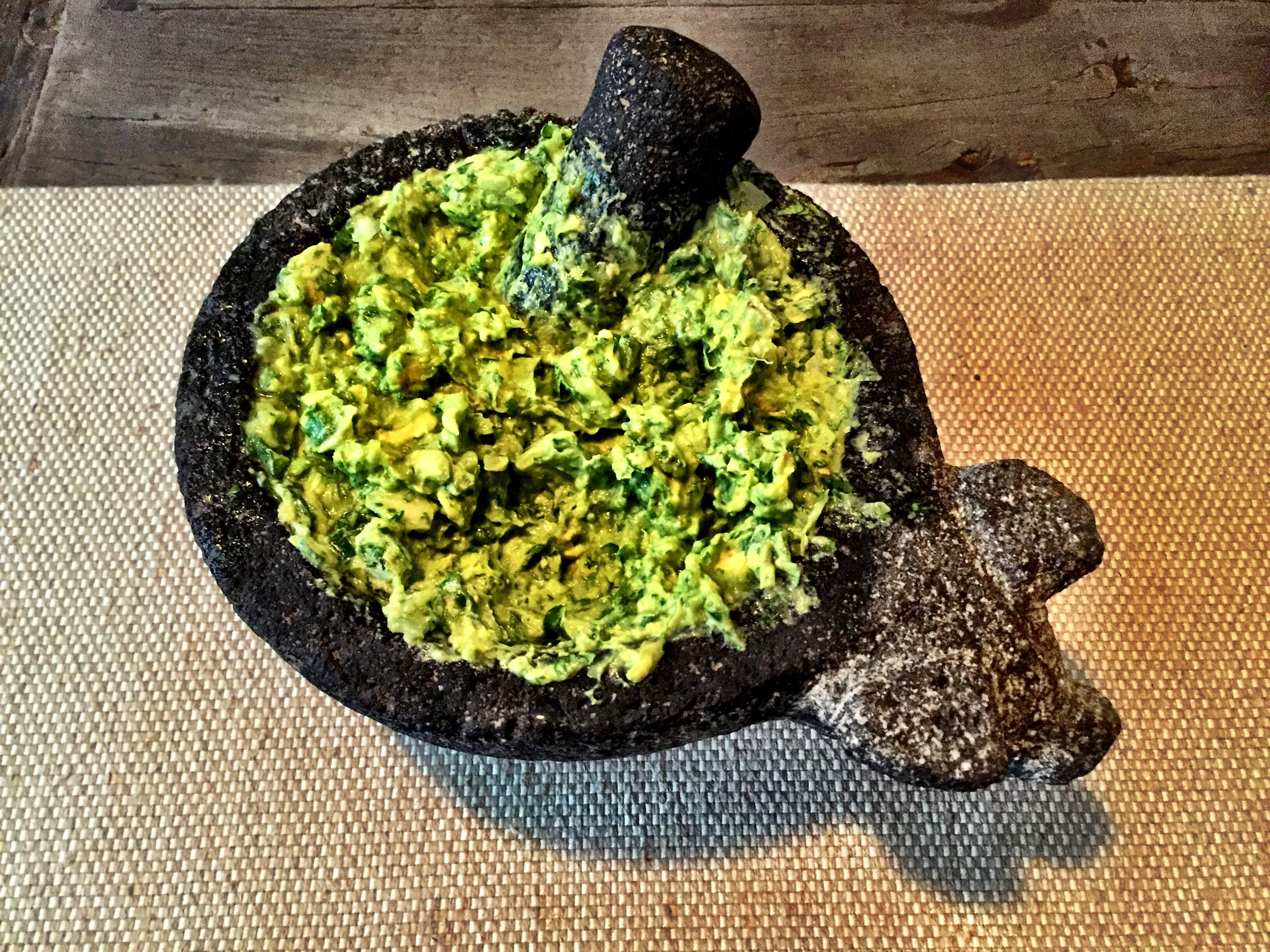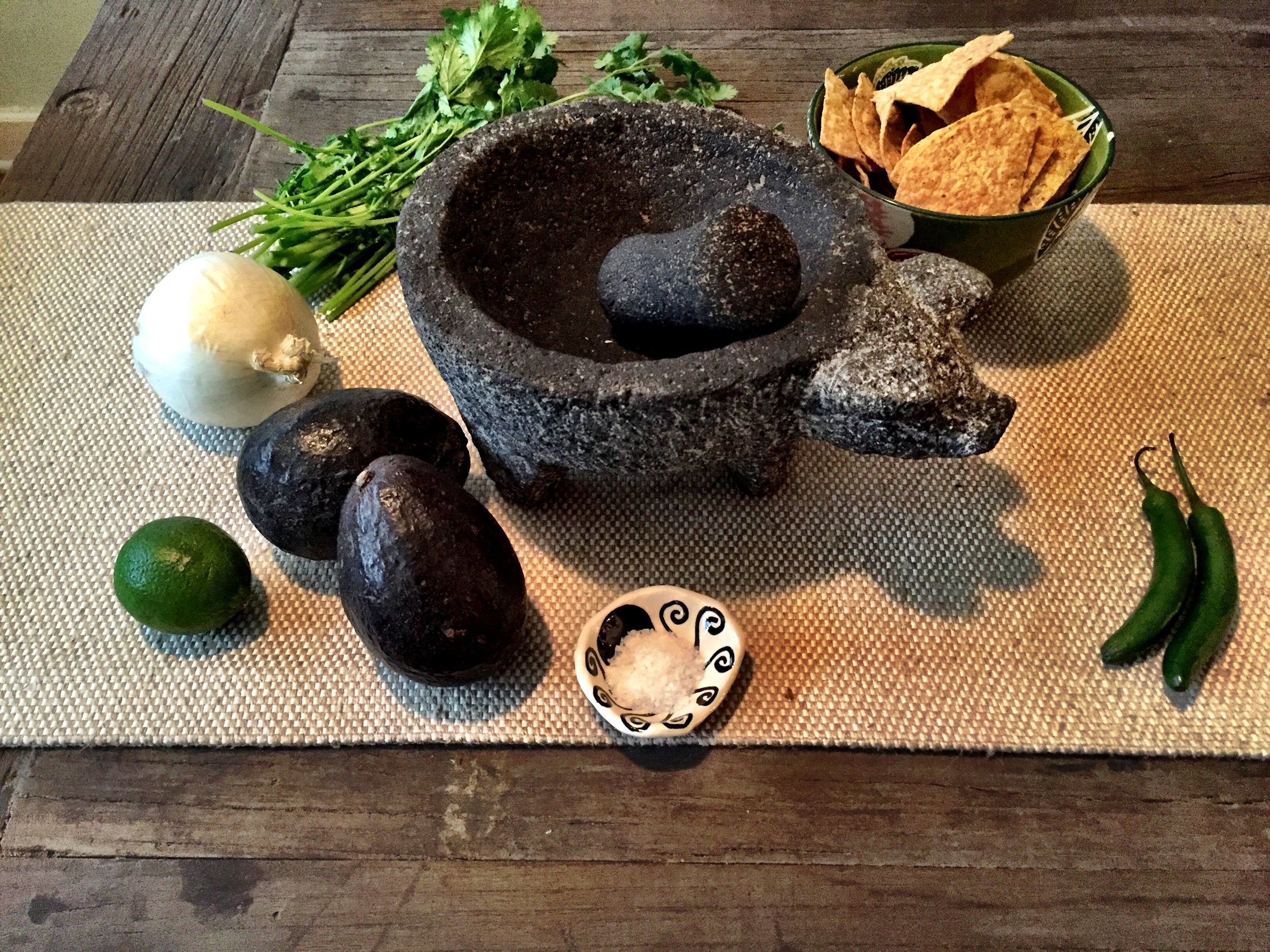Don’t miss la Iglesia de Coyoacán, a striking example of Spanish colonial history and one of the oldest surviving houses of worship in Mexico City.
Add la Iglesia de Coyoacán to your itinerary when exploring this boho neighborhood.
After lunch at Los Danzantes, Wally and I made our way from the leafy Jardín Centenario and crossed Calle Carrillo Puerto, the street that separates the adjacent Plaza Centenario and Plaza Hidalgo.
Presiding over the south side of the Plaza Hidalgo and directly in our line of vision was the Parroquia San Juan Bautista, known locally as la Iglesia de Coyoacán, the Catholic church and former mission dedicated to Saint John the Baptist. The Spanish first introduced Christianity to the indigenous Nahuatl people in the early 16th century.
Read More:
A WALKING TOUR OF ARTSY COYOACÁN
In front of the church entrance is a cobblestone square that originally extended into what is now Plaza Centenario. During the colonial period, the square was used to host religious one act dramatizations known as autos sacramentales. Rather than completely abandon old beliefs, the missionaries adopted a strategy to spread the new faith by incorporating indigenous ritual practices that had similarities to Christianity.
A four-story bell tower, which was added later, in the 18th century, stands to the west of the main church and was once topped by a dome, lantern and cross. Sadly, the dome collapsed during an earthquake in September 2017.
The church was built on the site of a school for Aztec nobles.
“San Juan Bautista was built upon the site of a calmecac, a school for Aztec nobility, whose ruins still exist beneath the cloister. ”
The relatively plain façade is in the Herrerian style, named after Spanish architect and mathematician Juan de Herrera. This architectural style is characterized by clean geometric lines and is almost entirely absent of ornamentation, with the exception of grooved classical pilasters, columns of the Ionic order set into the face of the church. An inscription in Latin above the door translates to, “There is none other but a house of God, and this a gate of the heavens.”
The exterior is plain, but the interior is anything but, as this ornate altar attests.
Above in bas-relief, are the coat of arms of the Roman Catholic Order of Preachers, better known as the Dominicans. The petals of the fleur-de-lis cross symbolize the 12 apostles. Another carving depicts a sort of monogram of the Virgin Mary — a crown with the intertwined letters A and M for Ave Maria.
Gorgeous archways and ceiling frescos adorn San Juan Bautista.
Construction of the church happened in fits and starts, between 1527 and 1552, on land donated to conquistador Hernan Cortés by the native Ixtolinque chief, who was baptized into the Catholic faith under the name of Juan de Guzmán. Under the direction of the Dominican order, San Juan Bautista was built upon the site of a calmecac, a school for the sons of Aztec nobility, whose ruins still exist beneath the cloister. The original structure was designed as a basilica, with a simple rectangular floor plan used in temple architecture.
In 1934, the church was declared a historic monument by the government of the republic.
The sides of the church’s interior are gloriously gilded.
Going for Baroque
If you’re like Wally and me, you can’t go to a city without exploring a few churches, and the Parroquia San Juan Bautista did not disappoint. Stepping inside, we immediately noticed the exuberant interior, modified between 1926 and 1947 to reflect the prevailing Baroque style and reduced to a single nave flanked by seven small chapels on either side.
If it’s not Baroque, don’t fix it.
The ubiquitous Virgin of Guadalupe
Among the most striking works are the illusion-inducing ceiling frescoes depicting scenes from the life of Christ by Catalan painter Juan de Fabregat. Angels perch high above the column capitals lining the walls and culminate in the magnificent Chapel of the Rosary, with its lavishly decorated high altar embellished with the glow of gold leaf.
The ceiling depicts scenes from the life of Jesus, including the Sermon on the Mount.
It’s certainly worth popping into Coyoacán’s main church for a quick wander.
An angel guards over the dome at the front of the church.
We paused to admire the vitrine with (the admittedly creepy) el Cristo de los Milagros, Christ of the Miracles, with a mystical assemblage of gold and pewter milagros, healing charms, pinned to a sea of red ribbons. Milagros of a specific body part, such as a leg, are used in a prayer for the improvement for some condition associated with a leg, such as arthritis or a bad knee. Some of the milagros had photos of the person to be healed.
The creepy, life-size Cristo de los Milagros
If you want to be healed of an ailment, leave a milagro of the proper body part and maybe a photo, then tie a red ribbon and pin it to the wall.
Oh, baby! One of the strange icons to offer devotions to at the Iglesia de Coyoacán
Other works were designed to appeal to the emotions of the faithful and feature biblical depictions of the lives of the saints of the Franciscan order, including the Vision of Saint Teresa, the taking of the habit of Santa Clara, and the stigmatizations of San Francisco, Saint Domingo and San Juan.
Expect an inundation of elaborate ornamentation.
Converting the infidels
Gold-painted statuary and frills line the sides of the church.
Corpse-like mannequins can seem a strange inclusion to a church.
One of the niches on the right-hand side of the church
We passed through a doorway into a small chapel, where a small group of students was sketching. This led out to an arched arcade of Tuscan columns. This was the cloister of the convent, perhaps founded by Friar Juan de la Cruz, an indigenous man who spoke Castilian Spanish. Within the convent’s walls, Nahuatl people were baptized and taught the tenets of the Christian faith.
Out back you can explore the quiet cloisters.
This might have been where indigenous people were baptized into the Catholic faith.
A group of students was sketching when we visited.
Like the neighborhood itself, the church is a destination full of rich culture. So if you should find yourself in Coyoacán, make sure to spend some time exploring the Parroquia San Juan Bautista. Like us, you’ll be glad you did. –Duke
La Iglesia de Coyoacán
Parroquia San Juan Bautista
Plaza Centenario 8
Villa Coyoacán
04000 Coyoacán
CDMX, Mexico

